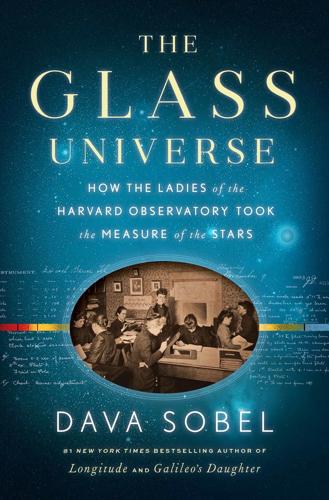
The Glass Universe: How the Ladies of the Harvard Observatory Took the Measure of the Stars
by
Dava Sobel
Published 6 Dec 2016
Astronomers who later resolved the clouds into star clusters still called them by Magellan’s name. In early 1905, in the Small Magellanic Cloud alone, Miss Leavitt uncovered nine hundred new variables. “What a variable-star ‘fiend’ Miss Leavitt is,” Charles Young of Princeton wrote in awe to Pickering on March 1, 1905. “One can’t keep up with the roll of the new discoveries.” Mrs. Draper expressed similar sentiments about “Miss Leavitt’s remarkable discovery of variables,” on March 11. As the tally continued to rise, Mrs. Draper wrote again in May to applaud “the large number of variables in the Small Magellan Cloud. It is certainly strange that so many of them should be found apparently close together.
…
Miss Leavitt, denied such intimacy with the heavens, could only imagine herself standing agape in the Andes, under the southern meanders of the Milky Way, watching the Magellanic Clouds trail after the star stream like a pair of lost sheep. Bailey believed the two Clouds to be unique structures, separate from the Milky Way. If so, if they in fact existed outside the bounds of the galaxy, then each Cloud constituted its own so-called island universe. Possibly the numerous other splotchy white nebulous objects scattered through space were also separate star systems, independent of the Milky Way. Bailey’s two- and four-hour exposures of the Magellanic Clouds, taken with the Bruce telescope, had revealed crowds of stars as faint as seventeenth magnitude.
…
Having twice updated her “Provisional Catalogue of Variable Stars” to append the new crops of 1903 and 1904, she hardly expected her “Second Catalogue of Variable Stars,” published in 1907, to be her final word on the subject. Miss Cannon was a census taker in the midst of a population explosion. The Second Catalogue, though comprehensive, concentrated on the variable stars of long period. It did not include the multitude of short-period variables Miss Leavitt had uncovered in the Magellanic Clouds. Those required a separate treatment, currently nearing completion by Miss Leavitt herself. “It may be asked,” Solon Bailey wrote in an article for Popular Science Monthly, “why it is necessary, or even desirable, to go on indefinitely with the discovery of new variables.” Aside from “the value of adding any new fact about the universe to the sum of human knowledge,” he offered an astronomer’s version of the mountaineer’s “Because it’s there.”
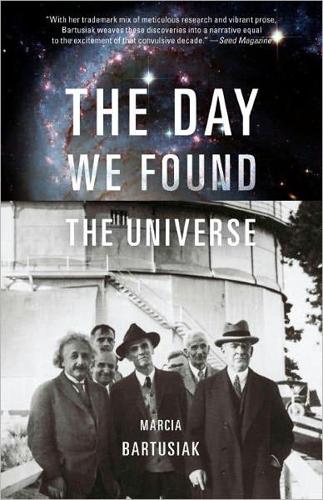
Day We Found the Universe
by
Marcia Bartusiak
Published 6 Apr 2009
With each new delivery of plates from Harvard's station in Peru (and checks on old ones going back to 1893), she readily and meticulously updated her count, so much so that a Princeton astronomer described her as a “variable-star ‘fiend.’” Soon she included the Large Magellanic Cloud in her tally, and by 1907 she found a record-setting total of 1,777 new variable stars residing within the prominent, mistlike clouds (before that, only a couple of dozen variable stars had been detected in the Magellanic Clouds). She dutifully reported her findings in the 1908 Annals of the Astronomical Observatory of Harvard College, with thirteen pages taken up with listing every new variable she had discovered, its exact position in the sky, as well as its minimum and maximum brightness.
…
Once he arrived at Harvard in 1920, she lost no time in asking his advice on advancing her research on the stars in the Magellanic Clouds. By then Shapley had already calibrated the Cepheids, but he told Leavitt he would like to see a deeper investigation of the short-period variables, stars that pulse over a matter of hours instead of many days. “[It's] of enormous importance in the present discussions of the distances of globular clusters and the size of the galactic system,” he said. Moreover, does the same period-luminosity law also work for stars in the Large Magellanic Cloud? he asked. He wished her success on tackling these questions. But just as she was on the verge of completing her prolonged stellar magnitude project—possibly when she would have at last gone back to her work on the Cepheids—Henrietta Leavitt passed away at the age of fifty-three.
…
“As for N.G.C. 6822, I think there is no doubt but that it is another star cloud like the Magellanic Cloud.” Although there was no love lost between Shapley and Hubble, the two astronomers maintained a courteous correspondence, perhaps adhering to that old adage, “Keep your friends close but your enemies closer.” In actuality, they needed each other. Shapley oversaw the world's foremost collection of astronomical photographs, while Hubble had ready access to its largest telescope. Shapley proceeded to estimate the distance of NGC 6822 by comparing its size and the observed magnitudes of its brightest stars to that of the Large Magellanic Cloud. Interestingly, he arrived at a distance of about a million light-years.
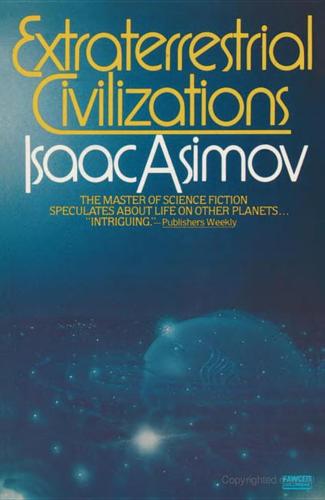
Extraterrestrial Civilizations
by
Isaac Asimov
Published 2 Jan 1979
By 1912, the use of these variable stars (called Cepheid variables because the first to be discovered was in the constellation Cepheus) made it possible to measure vast distances that could not be estimated in other ways. The Large Magellanic Cloud turned out to be 170,000 light-years away and the Small Magellanic Cloud 200,000 light-years away. Both are well outside the Galaxy. Each is a galaxy in its own right. They are not large, however. The Large Magellanic Cloud may include perhaps 10 billion stars and the Small Magellanic Cloud only about 2 billion. Our Galaxy (which we may refer to as the Milky Way Galaxy if we wish to distinguish it from others) is 25 times as large as both Magellanic Clouds put together. We might consider the Magellanic Clouds as satellite galaxies of the Milky Way Galaxy.
…
They were first described in 1521 by the chronicler accompanying Magellan’s voyage of circumnavigation of the globe—so they are called the Large Magellanic Cloud and the Small Magellanic Cloud. They were not studied in detail until John Herschel observed them from the astronomic observatory at the Cape of Good Hope in 1834 (the expedition that fueled the Moon Hoax). Like the Milky Way, the Magellanic Clouds turned out to be assemblages of vast numbers of very dim stars, dim because of their distance. In the first decade of the twentieth century, the American astronomer Henrietta Swan Leavitt (1868–1921) studied certain variable stars in the Magellanic Clouds. By 1912, the use of these variable stars (called Cepheid variables because the first to be discovered was in the constellation Cepheus) made it possible to measure vast distances that could not be estimated in other ways.
…
By the best modern methods of distance determination, it would appear that the Andromeda Galaxy is 2,200,000 light-years distant, eleven times as far away as the Magellanic Clouds. No wonder it was difficult to make out the individual stars. The Andromeda Galaxy is no dwarf, however. It is perhaps twice as large as the Milky Way Galaxy and may contain up to 600 billion stars. The Milky Way Galaxy, the Andromeda Galaxy, and the two Magellanic Clouds are bound together gravitationally. They form a “galactic cluster” called the Local Group and are not the only members, either. There are some twenty members altogether.
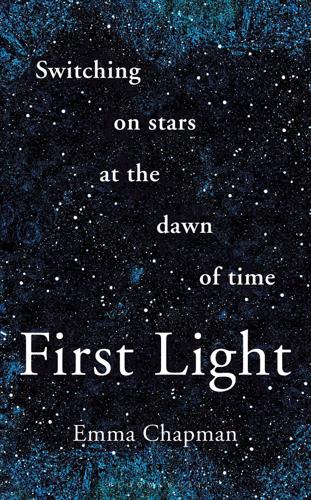
First Light: Switching on Stars at the Dawn of Time
by
Emma Chapman
Published 23 Feb 2021
For example, there are the spirals, the ellipticals, the irregulars and the barred spirals. The Local Group is a ‘galaxy zoo’, containing a good few of the different types. The three largest galaxies are, in order, Andromeda, the Milky Way and the Triangulum Galaxy, and they are also the only spiral galaxies in the local group. You might have heard of the Large Magellanic Cloud and Small Magellanic Cloud, which are the fourth and sixth most massive galaxies in the Local Group, but aside from them you are unlikely to have come across the others. It’s been hard to define when a galaxy is small enough to term it a ‘dwarf’, just as there isn’t an exact definition for when someone is ‘short’.
…
We should really call dwarf galaxies ‘galaxies’, and the big ones like the Milky Way ‘mega galaxies’ or some such, but who am I to argue. Anyway, as a rule of thumb, dwarf galaxies contain a maximum of a few billion stars, compared to the order of several hundred billion stars in the Milky Way, so are much smaller and less luminous. Just like galaxies, dwarf galaxies divide into a diverse morphology. The Large Magellanic Cloud and Small Magellanic Cloud are both irregular dwarfs, irregular in shape, and not quite fitting into the elliptical, spheroidal or spiral galaxy types. They are young, with plenty of gas fuelling ongoing star formation. Dwarf spheroidals are, in comparison, gas-poor and old, and the ellipticals somewhere in between – elongated spheroids and with some gas left for star formation.
…
Absolute Radiometer for Cosmology, Astrophysics and Diffuse Emission 2 (ARCADE 2) here absorption lines galactic spectra here, here quasar spectra here, here stellar spectra here, here, here, here, here, here, here acceleration here accretion disks black holes here, here, here, here star formation here, here Adams, Douglas here airships here, here, here All the Dead Stars (Paterson) here Aller, Lawrence here, here Alpha Centauri here alpha-element ratios here anaerobic life here Andromeda here age of light from here blueshifting here, here, here, here calcium absorption lines here, here, here collision with Milky Way here, here dwarf galaxies around here high- and low-velocity stars here H-R diagrams here luminosity here angular size here Antennae Galaxies here Antikythera device here astrology here astronauts here asymptotic giant branch (AGB) stars here atomic bombs here atomic cooling halos (ACH) here Baade, Walter here, here background radiation excess background theory here see also cosmic microwave background baryonic mass here Beanie Baby bubble here Bell Telephone Laboratory here Bell-Burnell, Jocelyn here beryllium here Betelgeuse here Big Bang here, here, here, here, here see also cosmic microwave background binary systems here, here black holes here, here, here accretion disks here, here, here, here accretion limit here binary systems here at centre of galaxies here, here, here direct collapse here, here, here first image here light and here Massive Compact Halo Objects (MACHOs) here Population III stars here, here, here quasars here, here, here, here supermassive here, here, here, here blackbody spectrum here, here, here, here, here, here, here blood moons here blueshifting here, here, here, here Bond, Howard here Bowman, Judd here Brown, Ernest here brown dwarfs here, here Bryson, Bill here Butler, Howard here calcium here, here, here Cannon, Annie Jump here carbon here, here, here carbon dioxide here, here Carter, Howard here, here Cassini, Giovanni Domenico here Centaurus here Chamberlain, Joseph here, here Chang’e missions here chess here Columbus, Christopher here core-collapse supernovae here, here corona here, here, here, here coronagraph here Coronal Heating Problem here, here coronium here, here Cosmic Background Explorer (COBE) here, here Cosmic Dawn here, here, here, here, here, here, here, here see also Experiment to Detect the Global EoR Signature (EDGES) cosmic microwave background here, here, here constraint on Epoch of Reionisation here discovery here, here spin temperature and here, here, here, here Cosmic Spectrum, The (Paterson) here, here cosmological constant here cyanobacteria here, here, here, here, here Dark Ages here, here, here, here, here, here, here, here, here, here, here, here Dark Energy Survey here, here dark matter here, here, here, here annihilation here, here in dwarf galaxies here EDGES results and here flat rotation curves and here, here halos here, here Massive Compact Halo Objects (MACHOs) here millicharged dark matter model here minihalos here, here, here reionisation of hydrogen and here Weakly Interacting Massive Particles (WIMPs) here, here de Bruyn, Ger here deuterium here, here, here, here Dicke, Robert here direct collapse black holes (DCBHs) here, here, here Doppler effect here, here, here Durham, UK here, here dwarf galaxies here alpha-element ratios here dark matter here defining here differentiating from globular clusters here, here, here, here dwarf spheroidals here Eridanus II here fossil first galaxies here galactic cannibalism here, here Large Magellanic Cloud here, here mass here, here metallicity here metal-poor stars here missing satellite problem here naming here neutron-capture elements here, here numbers here, here probability of finding Population III stars in here reionisation of hydrogen and here Segue 1 here, here, here, here, here, here, here, here Small Magellanic Cloud here, here stellar chemistry here ultra-faint here, here, here dynamical mass here Earth Great Oxygenation Event here, here, here orbit here snowball Earth here temperature here Earth-Moon-Earth (Paterson) here eclipses lunar here, here solar here, here, here, here Eddington, Arthur here Edison Company here, here Egypt, ancient here, here, here, here Einstein, Albert here, here, here, here, here elastic energy here electromagnetic spectrum here, here see also light electrons here, here, here, here ionisation here, here, here, here pair production here spin-flip transitions here, here Emerson, Ralph Waldo here endowment effect here energy conservation here elastic here force and here gravitational potential here, here kinetic here, here, here, here, here mass and here thermal here, here, here Epoch of Reionisation here, here, here, here, here, here constraints here cosmic microwave background and here dwarf galaxies here LOFAR-Epoch of Reionisation project here Population III stars here, here, here, here quasars here, here, here, here reionisation of hydrogen here, here, here, here, here, here see also Experiment to Detect the Global EoR Signature (EDGES) Eridanus II here Event Horizon Telescope (EHT) here excess background theory here Experiment to Detect the Global EoR Signature (EDGES) here, here, here, here, here absorption trough here, here, here dark matter theories here early presence of black holes here excess background theory here foregrounds theory here exponential growth here Farside Array for Radio Science Investigations of the Dark Ages and Exoplanets (FARSIDE) here Fast Radio Bursts (FRBs) here Fermi Large Area Telescope (Fermi-LAT) here first galaxies here, here first stars see Population III stars First Three Minutes, The (Weinberg) here flat rotation curves here, here Fleming, Williamina P. here Florian Goebel Major Atmospheric Gamma-ray Imaging Cherenkov (MAGIC) here Frost, Edwin here Fukushima disaster, Japan here galaxies atomic cooling halos (ACH) here black holes at centre here, here, here Centaurus A here collisions here, here definitions here Doppler effect here, here, here first here, here galactic cannibalism here, here Hubble flow here Local Group here M87 here mass-to-light ratio here spectra here, here speed here spiral here see also Andromeda; dwarf galaxies; Milky Way Galilei, Galileo here gamma rays here Gamow, George here gas clouds see star formation gas pressure here, here, here general relativity here, here, here Giant Metrewave Radio Telescope (GMRT) here Glacier National Park, US here globular clusters here, here, here, here, here gravitational potential energy here, here gravitational waves here gravity here, here, here, here Great American Eclipse here Great Oxygenation Event here, here, here Greece, ancient here Green Bank Telescope here Halley, Edmond here Hamelin Pool, Australia here height, human here helium here, here, here, here, here, here, here, here, here Herschel, Caroline here Herschel, William here Hertzsprung-Russell (H-R) diagrams here, here, here Hill-Brown theory here Hindenburg airship here Hiroshima, Japan here Hitchhiker’s Guide to the Galaxy, The (Adams) here Holmdel Horn Antenna here, here, here Holst, Gustav here Hubble, Edwin here Hubble flow of galaxies here Hubble Space Telescope here, here, here, here, here, here, here Hubble Ultra Deep Field here, here Hubble–Lemaître law here hydrogen here, here, here, here, here, here, here 21cm radiation here, here, here, here absorption lines here, here, here, here in airships here collisions here flammability here isotopes here, here molecular hydrogen cooling here, here, here, here, here nuclear fusion here, here, here, here, here, here nucleosynthesis here recombination here, here, here reionisation here, here, here, here, here, here spin temperature here, here, here, here see also star formation hydrogen bombs here Iben, Icko, Jr. here, here ice age here Illustris simulation here inflation period here infrared radiation here, here, here, here initial mass function here, here, here, here interferometry here International Dark Sky Places here International Thermonuclear Experimental Reactor (ITER) here Interstellar (film) here interstellar medium here metal enrichment here, here, here, here, here, here Io here, here ionisation here reionisation of hydrogen here, here, here, here, here, here ionosphere here, here, here, here iron here, here, here, here, here see also metal-poor stars ironstones here isotopes here, here James Webb Space Telescope (JWST) here, here, here, here Japan Fukushima disaster here Nagasaki and Hiroshima bombings here Naha tug-of-war here, here Jeans, Sir James Hopwood here Jeans mass here, here, here, here, here, here Jupiter, moons of here, here Keplerian descent here kinetic energy here, here, here, here, here King, Ivan here Koopmans, Leon here Lagrange points here, here Lake District, UK here Lake Erie, US here Large Magellanic Cloud here, here Large Synoptic Survey Telescope (LSST) here, here Laser Interferometer Gravitational-Wave Observatory (LIGO) here Laser Interferometer Space Antenna (LISA) here, here Lemaître, Georges here light black holes and here colours here Doppler effect here, here, here electromagnetic spectrum here, here infrared here, here, here, here mass-to-light ratio here speed here, here, here ultraviolet (UV) here, here, here, here, here, here, here wavelengths here wave-particle duality here see also photons light pollution here lightning here lithium here Local Group of galaxies here Lockyer, Norman here Loeb, Abraham here Long Wavelength Array (LWA) here longitude here Lovell, Bernard here Lovell Telescope here Low Frequency Array (LOFAR) here, here, here, here, here, here luminous mass here, here, here lunar eclipses here, here Lunar Low Frequency Antennas for Radio Astronomy (LUFAR) here Lyman-Werner band of energies here M87 here magnesium here Magpie Bridge satellite here main sequence stars here, here mass baryonic here deaths of stars and here, here, here dynamical here energy and here gravity and here Jeans mass here, here, here, here, here, here luminous here, here, here mass-lifetime relation here, here mass-to-light ratio here maximum mass of stars here measuring here, here star formation and here, here, here, here Massive Compact Halo Objects (MACHOs) here Mercury here metal content of stars here, here, here, here, here, here, here, here, here in dwarf galaxies here, here, here metal-poor stars here, here metal cooling here, here metal enrichment of interstellar medium here, here, here, here, here, here metal-free stars see Population III stars metal-poor stars here, here discovery here, here in dwarf galaxies here metallicity values here, here in Milky Way here, here, here searching for here, here, here SM0313-6708 here SMSS J1605-1443 here, here, here velocities here, here methane here, here, here Mice Galaxies here microwave ovens here microwaves here Milky Way here black hole at centre here, here bulge and disk here collision with Andromeda here, here gamma rays here halo here, here, here, here high- and low-velocity stars here H-R diagrams here metal-poor stars here, here, here missing satellite problem here numbers of dwarf galaxies around here probability of finding Population III stars in here Sagittarius Stream here millicharged dark matter model here minihalos here, here, here missing satellite problem here Mitchell, Edgar here molecular hydrogen cooling here, here, here, here, here Moon acceleration experiment on here angular size here Chang’e missions here distance from Earth here lunar eclipses here, here radio arrays on here solar eclipses here, here, here, here tidal locking here moons of Jupiter here, here mummies here, here, here, here Murchison Widefield Array (MWA) here Nagasaki, Japan here Naha tug-of-war, Japan here, here nanoflares here, here National Aeronautics and Space Administration (NASA) here, here, here, here, here National Air and Space Museum, Washington DC here neon here, here Neptune here, here Netherlands-China Low Frequency Explorer (NCLE) here, here neutron stars here, here, here neutron-capture elements here, here neutrons here, here, here, here, here New York Times here Newton, Isaac here, here Nobel Prize for Physics here Notes From a Small Island (Bryson) here nuclear fission here, here nuclear fusion here, here, here, here, here, here nuclear power here, here nuclear weapons here nucleosynthesis here Olbers’ paradox here Oort, Jan here optical astronomy here, here Orion here oxygen here, here, here, here, here see also Great Oxygenation Event pair production here pair-instability supernovae here, here Parker Solar Probe here Parkes radio telescope here Paterson, Katie here, here, here, here, here, here Payne-Gaposchkin, Cecilia here, here, here Peebles, P.

Neutrino Hunters: The Thrilling Chase for a Ghostly Particle to Unlock the Secrets of the Universe
by
Ray Jayawardhana
Published 10 Dec 2013
leptons: A family of elementary particles, including the electron and the neutrino, which are not subject to the strong force but interact via the weak force. light-year: The distance that light travels in a year, just under 10 trillion kilometers (or about 6 trillion miles). Magellanic Clouds: The Large and Small Magellanic Clouds (LMC and SMC) are two irregularly shaped satellite galaxies of the Milky Way. Supernova 1987A occurred in the LMC. Manhattan Project: The research and development program that produced the first atomic bombs during the Second World War. Many top physicists worked on the project under the auspices of the U.S. government, with additional support from the United Kingdom and Canada.
…
Even though neutrinos turned out not to be superluminal in the end, they have taught us a great deal already about the shenanigans of the subatomic realm and allowed us to peer deep into the Sun’s scorching heart. Besides, without neutrinos, nuclear power generators and nuclear bombs would not be possible. Neutrinos were the first harbingers of the dramatic demise of a massive, bloated star that exploded 160,000 light-years away in the Large Magellanic Cloud, a satellite galaxy of the Milky Way that appears as a fuzzy patch in the southern sky. Three underground detectors in Japan, Russia, and the United States recorded a total of two dozen neutrinos from the explosion, out of the billions upon billions that swept through the Earth, in a short burst on February 23, 1987.
…
The final approach to the 7,800-foot Las Campanas summit takes would-be stargazers along a steep, narrow road carved into the hillside. The view from the top is spectacular during the day, but is absolutely stunning at night when the star-studded Milky Way arches across the sky, accompanied by two fuzzy patches of light, the Large and Small Magellanic Clouds, off to one side. Ian Shelton, a thirty-year-old Canadian who grew up in Winnipeg, happened to be here at Las Campanas on the night of February 23, 1987. He was employed as the resident observer at a modest 24-inch telescope that belonged to the University of Toronto. In addition to taking the data that Toronto astronomers asked for, he found time to tinker with an even smaller 10-inch telescope on the mountain.
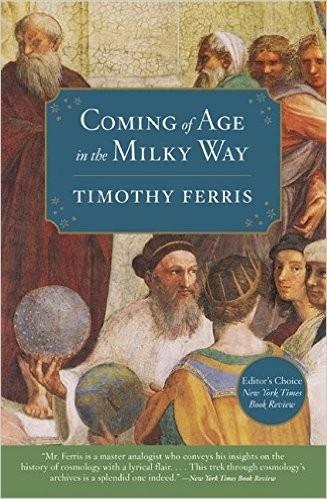
Coming of Age in the Milky Way
by
Timothy Ferris
Published 30 Jun 1988
It was painstaking toil, considered too menial to claim the time of a full-fledged astronomer. Leavitt spent thousands of hours at it, and in doing so acquired an unusual degree of familiarity with the southern sky. She happened to be assigned to a region that includes the Magellanic Clouds. So named because they attracted the attention of Magellan and his crew on their voyage around the world, the Magellanic Clouds are two large, shaggy patches of softly glowing light that resemble detached swatches of the Milky Way. We know today, as Leavitt and her contemporaries did not, that the Clouds are nearby galaxies, and that the stars in each Cloud therefore all lie at about the same distance from us, like fireflies in a bottle viewed from across a field at night.
…
We know today, as Leavitt and her contemporaries did not, that the Clouds are nearby galaxies, and that the stars in each Cloud therefore all lie at about the same distance from us, like fireflies in a bottle viewed from across a field at night. This means that any significant difference in the apparent magnitudes of stars in a Magellanic Cloud must result from genuine differences in their absolute magnitudes and not from the effect of differing distances. Thanks to this happy circumstance, Leavitt in studying Cepheid variable stars in the Magellanic Clouds was able to notice a correlation between their brightness and their period of variability—the brighter the Cepheid, the longer its cycle of variation. The period-luminosity function Leavitt discovered was to become the cornerstone of measuring distance in the Milky Way and beyond.
…
Since only a tiny fraction of the stars in the sky are visible without a telescope, Supernovae almost always seem to have appeared out of nowhere, in a region of the sky where no star had previously been charted; hence the name nova, for “new.” Supernovae bright enough to be seen without a telescope are rare; the next one after the seventeenth century did not come until 1987, when a blue giant star exploded in the Large Magellanic Cloud, a neighboring galaxy to the Milky Way, to the delight of astronomers in Australia and the Chilean Andes. The two Supernovae that graced the Renaissance caused quite a stir, inciting not only new sights but new ideas. Tycho spotted the supernova of 1572 on the evening of November 11, while out taking a walk before dinner, and it literally stopped him in his tracks.

Big Bang
by
Simon Singh
Published 1 Jan 2004
She made her breakthrough by focusing her attention on the stellar formation known as the Small Magellanic Cloud, named after the sixteenth-century explorer Ferdinand Magellan, who recorded it when he sailed the southern oceans while circumnavigating the globe. Because the Small Magellanic Cloud is visible only from the southern hemisphere, Leavitt had to rely on photographs taken at Harvard’s southern station at Arequipa in Peru. Leavitt managed to identify twenty-five Cepheid variables within the Small Magellanic Cloud. She did not know the distance from the Earth to the Small Magellanic Cloud, but she suspected that it was relatively far away and that the Cepheids within it were relatively close together.
…
She did not know the distance from the Earth to the Small Magellanic Cloud, but she suspected that it was relatively far away and that the Cepheids within it were relatively close together. In other words, all twenty-five Cepheids were more or less at the same distance from the Earth. Suddenly, Leavitt had exactly what she needed. If the Cepheids in the Small Magellanic Cloud were all roughly the same distance away, then if one Cepheid was brighter than another it was because it was intrinsically more luminous, not just apparently brighter. The assumption that the stars in the Small Magellanic Cloud were roughly equidistant from the Earth was something of a leap of faith, but a very reasonable one. Leavitt’s line of thinking was akin to an observer seeing a flock of twenty-five birds in the sky and assuming that the distance between each one is relatively small compared with the distance between the observer and the entire flock.
…
However, if you saw twenty-five birds spread around the sky and one seemed smaller than the others, then you could not be sure whether that bird was genuinely smaller or just farther away. Leavitt was now ready to explore the brightness versus period relationship for Cepheids. Building on the assumption that the apparent brightness of each Cepheid in the Small Magellanic Cloud was a true indication of its actual brightness in relation to the other Cepheids in the Cloud, Leavitt plotted a graph of the apparent brightness against the period of variation for the twenty-five Cepheid stars. The result was astonishing. Figure 45(a) shows how Cepheids that fluctuate over a longer period are typically brighter, and even more importantly, the data points generally seem to follow a smooth curve.

The Milky Way: An Autobiography of Our Galaxy
by
Moiya McTier
Published 14 Aug 2022
But there are a few neighborhood galaxies who, over time, became what I guess you might call my friends. The biggest and brightest and most important of them is Andromeda, but I won’t give away too much of that story just yet. That leaves Larry, Sammy, and Trin, or as you probably know them, the Large Magellanic Cloud, the Small Magellanic Cloud, and Triangulum. “Friends” is possibly too strong a word, and not always accurate. Do you have a word for a being whose presence you tolerate because its absence would lead to mind-shattering loneliness and despair?3 You humans can actually spot all three of them with your weak naked eyes.
…
But there are some primordial dwarfs who remained small because they just didn’t work hard enough or eat enough material when they were young. I’m not implying that I’m better than dwarf galaxies just because of my size. There are some galaxies right on the cusp between dwarf and not, like the Large Magellanic Cloud, whom I know better as Larry. The two of us have our disagreements, and I am the objectively better galaxy, but it’s not because of the difference in our sizes. One fatal flaw for dwarf galaxies is that, because they have less mass than a full-grown galaxy, they’re easier to rip apart with gravitational forces.
…
In a few billion years, my gravitational pull will lure them in, and I’ll devour them both. Don’t pity them though. We’ve always known the time would come, and their stars will survive, even if they do get somewhat scattered throughout my body. But I’ve gotten ahead of myself. I haven’t even properly introduced you to Sammy yet. You might know Sammy as the Small Magellanic Cloud, and perhaps you’ve even seen the blurry smudge in your night sky if you live near your planet’s southern hemisphere. Sitting just two hundred thousand light-years away and weighing in at only seven billion times the mass of your sun, Sammy is one of my closest and, pathetically, largest neighbors after Larry.
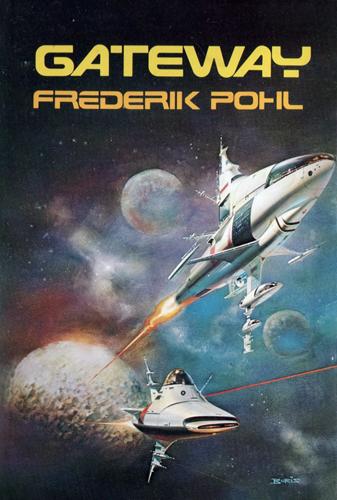
Gateway
by
Frederik Pohl
Published 15 Dec 1977
It is the brightest of the external galaxies, and you can recognize it fairly well from almost anywhere a Heechee ship is likely to go. With a little magnification you can be sure of the spiral shape, and you can double-check by comparing the smaller galaxies in roughly the same line of sight. While I was zeroing in with M-31, Sam was doing the same with the Magellanic clouds, or what he thought were the Magellanic clouds. (He claimed he had identified S Doradus.) We both began taking theodolitic shots. The purpose of all that, of course, is so that the academics who belong to the Corporation can triangulate and locate where we’ve been. You might wonder why they care, but they do; so much that you don’t qualify for any scientific bonus unless you do the full series of photos.
…
I have a summer apartment that overlooks the Tappan Sea and the Palisades Dam. And the girls go crazy over my three Out bangles. You don’t see too many prospectors anywhere on Earth, not even in New York. They’re all wild to have me tell them what it’s really like out around the Orion Nebula or the Lesser Magellanic Cloud. (I’ve never been to either place, of course. The one really interesting place I’ve been to I don’t like to talk about.) “Or,” says Sigfrid, having waited the appropriate number of microseconds for a response to whatever it was he said last, “if you really are happy, why do you come here for help?”
…
And I don’t know if I can make you understand what it felt like. I mean, there I was, in a seat where Heechee had sat half a million years ago. The thing in front of me was a target selector. The ship could go anywhere. Anywhere! If I selected the right target I could find myself around Sirius, Procyon, maybe even the Magellanic Clouds! Teacher got tired of hanging head-down and wriggled through, squeezing in behind me. “Your turn, Broadhead,” she said, resting a hand on my shoulder and what felt like her breasts on my back. I was reluctant to touch. I asked, “Isn’t there any way of telling where you’re going to wind up?”

Forever Free
by
Joe Haldeman
Published 14 Oct 2000
It involved sexual details that we didn't used to discuss at the dinner table. But times change, and fun is fun. Chapter two The thing we were plotting actually grew out of an innocent bantering argument I'd had with Charlie and Diana some months before. Diana had been my medical officer during the Sade-138 campaign, our last, out in the Greater Magellanic Cloud; Charlie had served as my XO. Diana had delivered both Bill and Sara. They were our best friends. Most of the community had taken Sixday off to get together at the Larsons' for a barn-raising. Teresa was an old vet, two campaigns, but her wife Ami was third-generation Paxton. She was our age, biologically, and they had two fusion-clone teenaged daughters.
…
If the ship couldn't make collapsar insertion and go home, those modules gave the people a chance of building a new home. We didn't know whether it had ever happened. There had been forty-three cruisers unaccounted for at the end of the war, some of them so far away that we would never hear from them. My own last assignment had been in the Large Magellanic Cloud, 150,000 light-years away. Most of the rest of the hold was given over to redundancy, materials and tools to rebuild almost anything in the living cylinder, but the area closest to where we were floating was all tools, some as basic as picks and shovels and forklifts, some unrecognizably esoteric.
…
"I'm afraid it is a grave," the woman said. "And we're about to join them." All three of them looked at me. The faceless man spoke. "You did it. You tried to leave the Galaxy. Escape the preserve the nameless established for us." "That's ridiculous," I said. "I've left the Galaxy before. The Sade-138 campaign was in the Greater Magellanic Cloud. Other campaigns were in the Lesser Cloud and the Sagittarius Dwarf." "Collapsar travel is not the same," the woman said. "Wormholes. It's like exchanging one quantum state for another, and then going back." "Like a bungee jump," our fan of the twentieth century added. "With your starship," she continued, "you were actually leaving.
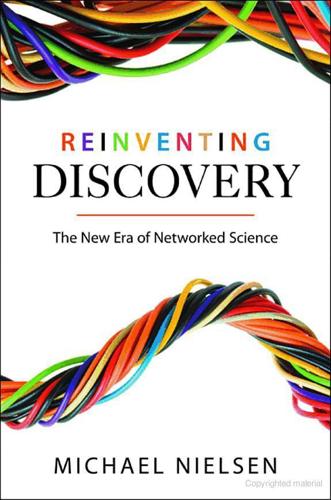
Reinventing Discovery: The New Era of Networked Science
by
Michael Nielsen
Published 2 Oct 2011
To give you more of the flavor of the SDSS’s impact, let me briefly describe two more of those discoveries. You perhaps already know that our Milky Way galaxy has two neighboring galaxies, the Large and Small Magellanic clouds. These are dwarf galaxies, with the larger of the two containing about 30 billion or so stars, compared to our Milky Way’s hundreds of billions. If you’ve never been to the southern hemisphere, then you may never have seen the Magellanic clouds, for they’re too far south in the sky to be visible from much of the northern hemisphere. But they are visible on a dark night in the southern hemisphere, where they show up as smudges in the sky.
…
But they are visible on a dark night in the southern hemisphere, where they show up as smudges in the sky. According to our best current understanding of galaxy formation, the Milky Way should have tens or hundreds of nearby dwarf galaxies. But prior to the SDSS only a few dwarf galaxies other than the Magellanic clouds had been discovered, and it was a puzzle where all the other missing dwarfs were. When the SDSS images became available, several astronomers searched the images for more dwarf galaxies. They didn’t do this manually—it would have taken far too long to peruse all the images. Instead, they used computer algorithms to search out new dwarf galaxies in the SDSS images.
…
See also meaning found in knowledge Knuth, Donald, 58 Krush, Irina, 16–18, 24–26, 35, 66, 67–68, 74 Lakhani, Karim, 218 language translation by machine, 124–26 Lanier, Jaron, 223 Large Hadron Collider (LHC), 161 Large Synoptic Survey Telescope (LSST), 107, 151 lasers, 157 Lauer, Tod, 100–101, 103, 114 lean manufacturing, 36 Leibniz, Gottfried Wilhelm, 174 Lessig, Lawrence, 220 Lévy, Pierre, 217, 221 libraries, and new knowledge tools, 235–36 line-free configurations, 209–10, 212 Lintott, Chris, 133, 134–35 Linus’s Law, 223 Linux: conscious modularity in development of, 51–52, 56–57 microcontributions to, 63 near-fracturing of, 49–50 origin of, 20, 44–45 release 2.0, 52 societal change and, 158 ubiquity of, 45 Lockheed Martin Skunk Works, 36 Lockyer, Joseph Norman, 138 machine translation, 124–26 Mackay, Charles, 218 Mad Max (film), 34 Magellanic clouds, 99 Manhattan Project, 36 markets: collaboration markets, 85, 86, 87, 182, 196 delivering social benefits of science, 156–57, 158 online collaboration compared to, 37–38 subsumed by online tools, 38–39, 224 Masum, Hassan, 171 mathematical proof. See Polymath Project MathWorks competition, 60–63, 64–66, 74 addictive quality of, 146 filtering information in, 199 shared praxis in, 75 MATLAB, 65, 66 McCarthy, John, 58 McVoy, Larry, 50 meaning found in knowledge: computerized tools and, 5, 112–13, 115–16 data web and, 111 dramatic expansion in, 3, 95–96 nature of explanation and, 128 as new method of discovery, 93.
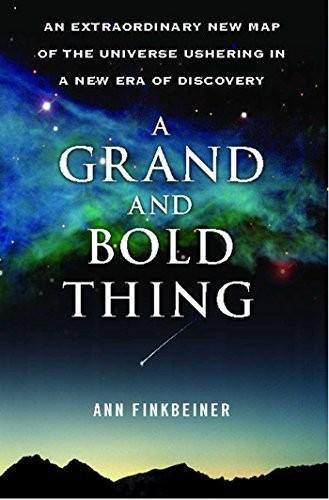
A Grand and Bold Thing: An Extraordinary New Map of the Universe Ushering
by
Ann K. Finkbeiner
Published 16 Aug 2010
This solar system is itself held by gravity—along with 10 billion other stars and solar systems—in an orbit around the center of a barred spiral galaxy. We see the galaxy up close and edge on as a splash across the night sky and call it the Milky Way. The Milky Way is bound by gravity—along with around thirty-five galaxies, including Andromeda and the Large and Small Magellanic clouds—in a cluster; ours is called the Local Group. The Local Group is one of around one hundred galaxy clusters gathered by gravity but not bound together and strung like beads into the Virgo Supercluster. The Virgo Supercluster is one of an uncounted, uncountable number of superclusters that in turn form what looks like an elaborate, fractal foam of galaxies arching like the skins of bubbles around immense voids.
…
P., 133 Dressler, Alan, 20 drift scanning, 15–16, 102 advantage of, 116 at celestial equator, 116–17 dust, 167, 197 from comet, 170 light and, 125 in Milky Way, 125, 162 Dusty (software), 197 dwarf galaxies, 163–65 Early Data Release, 138, 158 East Tennessee State University, 165–66 Einstein, Albert, 11, 43, 148 cosmological constant of, 148 Eisenstein, Daniel, 145, 147, 178, 180 electrons, 137, 187–90 elements, formation of, 188, 190 elliptical galaxies, 173, 182–83, 185, 191, 192–93 endNight (software), 112 Energy, Department of, (DoE), U.S., 35, 37, 38, 39 eScience, 159 Evans, Mike, 79 evilmap (software), 128 Experimental Astrophysics Group, 38–39 Fan, Xiaohui, 106–7, 119, 133, 135, 136, 180 Federal Express, 122 Fermi National Accelerator Laboratory (Fermilab), 39, 45, 76, 82, 83, 104, 132, 138, 177, 180 fiber mapper and, 126–27 headquarters of, 37–38 photometric pipeline and, 62–66, 105, 122 Sloan survey archive and, 155–56 Sloan survey funding and, 47, 78–79 Sloan survey hardware and, 76 Sloan survey software and, 62, 117 software crisis and, 62, 65–68 fiber mapper, 126–31 Finkbeiner, Doug, 125, 128–29, 130, 180 photometric calibration and, 142–44 FIRST (sky survey), 167 First Light beer, 104 FK5 star, 115 Four-Shooter (CCD camera), 16, 20–21, 93, 117 Fourteenth European White Dwarf Workshop, 175 Frieman, Josh, 131 Frontiers of Astronomy (Hoyle), 9 galaxies, 16, 21, 30, 146, 160 basic shapes of, 182–85 BCG, 18–19, 144–45 bimodality of, 182–86 brightness of, 141 classification of, 170–71 dwarf, 162–65 earliest survey of, 25–26 elliptical, 173, 182–83, 185, 191, 192–93 evolution of, 182–85 first nonoptical survey of, 26–27 formation of, 162–63, 191–92 gravity and, 19 Green Pea, 172–73 irregular, 173 LRG, 145, 147, 150, 177, 192–93 mapping, 144–45 merger of, 163–64, 165, 184 Palomar survey of, 27–28, 169 redshift of, 11–13 satellite, 163 spectrum of, 23–24 spiral, 182–83, 185, 191 superclusters of, see superclusters in universe, 8–9 variety of, 22 Galaxy Zoo, 170–72, 173 Forum (website), 172 GALEX (sky survey), 167 Galileo Galilei, 29, 101 gamma rays, 27, 166 Gamow, George, 110 Gemini (telescope), 83 general relativity, theory of, 11, 148 Geological Survey, U.S., 157 Gillespie, Bruce, 98–99 cracked mirror and, 117–18 Gliese 229 (star), 135 globular clusters, 14, 162, 164 Goldberger, Murph, 45, 46 Gollust, Keith, 42–43 Gomory, Ralph, 46, 120 Google, 169, 179 Google Sky project, 169 Gott, Richard, 17 gravitational lenses, 14 gravity, 2–3, 19, 31, 146, 147, 148, 187 at beginning of universe, 187–89 black hole formation and, 190–91 dark energy and, 192 Gray, Hanna, 45, 48 Gray, Jim, 157, 167 Green Peas (galaxies), 172–73 Gruber Foundation Cosmology Prize, 195 Gunn, James Edward, 5–6, 25, 28, 33–34, 39, 43–44, 46, 53, 55–57, 59, 60–61, 70, 74, 75, 76, 83, 86, 89, 90, 91, 98, 99, 100, 106–7, 117, 118, 125, 126, 127, 140, 154, 158, 163, 178, 183, 187, 192 at Asteroids to Cosmology symposium, 194–95 astronomical surveys and, 16–22 astronomy interest of, 8–10 background of, 8–9, 14 college experience of, 10–14 on community-based astronomy, 179–80 on cosmology, 196 dark energy as viewed by, 148 early career of, 13–16 first light and, 101–4 Four-Shooter, built by, 16 Hubble Space Telescope and, 1–4 management crisis and, 80–81 mirror control mistake of, 119 personality of, 7–8 PFUEI built by, 15–16 photometric calibration, concern about, 141–42 on photometric pipeline, 67 prizes and awards of, 8, 42, 195 quasar cutoff and, 136 research style of, 14 Sloan III and, 194 on software, 85 spectroscopic system and, 49, 124 survey camera and, 59, 95–97 on technology in astronomy, 195–96 in Time, 10–11 Gunn-Peterson trough, 13–14, 16, 137 Hale Telescope, 11 halo stars, 162 Hanny (teacher), 172 Harvard University, 62, 180 Hawaii, University of, 179 Heckman, Tim, 48–49, 70–71, 90, 183, 194 Henry Norris Russell Lectureship, 195, 196 Hercules (constellation), 163 Herschel, William, 25–26, 27, 134 Hextex company, 52–53 Hogan, Craig, 73, 100 Hogg, David, 95, 125, 133, 139, 140, 142, 180, 182–84, 185, 193, 194 hoggPT (software), 142–43 Hoyle, Fred, 9–10, 14, 15, 26 Hubble, Edwin, 17, 26 Hubble constant, 17, 18 Hubble Space Telescope, 6, 24, 33, 43, 85, 169, 176 camera of, 3–4 Gunn and, 2, 3–4 mirror problem of, 1–2, 4–5 NASA and, 3, 4–5 hydrogen, 137, 188 in early universe, 189–90 Ia supernovae, 148–49 infrared astronomy, 166, 167, 169 infrared waves, 27, 125, 135, 162, 182–83 Installation Task Force, 76 Institute for Astronomy, University of Hawaii, 179 Institute of Advanced Study, 47, 62, 95, 142 postdocs at, 43–44 Intel, 158 International Virtual Observatory Alliance, 167 Internet, 170 Iowa State University, 165–66 irregular galaxies, 173 Ivezić, Željko, 134, 167, 197–98 Jet Propulsion Lab, 14 Johns Hopkins University, 50, 62, 79, 81, 83–84, 121, 135, 179 Sloan survey archives and, 155–56 Sloan survey funding and, 47–49 Sloan III and, 177 Juno (asteroid), 160 Jupiter (planet), 134 Keck telescope, 83, 137 Kent, Steve, 62–63, 66–67, 68–69, 79, 82, 156 Kentucky, University of, 197 Kitt Peak National Observatory, 23–24, 30–31, 35 Kleinman, Scot, 175 Knapp, Jill, 1–2, 55, 64, 70, 104, 119, 126, 131, 135, 176, 181, 197 Kolb, Edward “Rocky,” 37 Kron, Rich, 29–31, 34, 35, 39, 45, 55, 77, 104, 156, 177–78, 180 becomes survey director, 138 redshift survey idea of, 32–33 Lamb, Don, 36–37 Large Magellanic cloud, 31 Large Synoptic Survey Telescope (LSST), 179, 197 Lawrence Berkeley National Laboratory, 180 Legacy project, 177 Leger, French, 84, 112, 117, 124 cracked mirror problem and, 118 moths problem and, 114–15 as telescope engineer, 110–11 Leo (constellation), 163 Leo IV (dwarf galaxy), 163 Leo V (dwarf galaxy), 163 Lethe (star stream), 164 Lick Observatory, 29 light, 28 at beginning of universe, 187–89 dust and, 125 electromagnetic spectrum and, 167 photometry and, 140–41 Lightman, Alan, 21 Lintott, Chris, 170, 171–72, 173 Local Group, 31 Long, Dan, 102, 109, 116–17 luminous red galaxies (LRGs), 145, 147, 150, 177, 192–93 Lupton, Robert, 64–66, 67, 68–69, 96, 100–103, 106, 117, 121, 134, 140 MacArthur Foundation, 8 Magellan telescope, 47, 48 management crisis: astrometry problem and, 86 chronic lateness and, 75, 79 critical path schedules and, 83–84 Gunn and, 80–81 Installation Task Force and, 76 internecine conflict and, 75 money problems and, 75, 77, 81–83 Nash Committee and, 70, 82 neutral reviewer of, 81–83 postdocs and, 75 professional managers hired for, 75–78, 83–85, 86 science requirements debate and, 84–86 tiger teams and, 79–80, 81, 82 work breakdown structure and, 76, 81, 83–84 Mannery, Ed, 51, 53, 77, 98 Map of the Universe, see Sloan Digital Sky Survey Map of the Universe (Kron), 45 “Mapping the Universe,” 74 Margon, Bruce, 50, 89–90 Mars (planet), 134 matter, 2–3, 145–46, 147, 187 kinds of, 187–88 Max Planck Institute for Astronomy, 164 Max Planck Institute for Astrophysics, 183 methane, 135 Microsoft, 157, 158 WorldWide Telescope of, 169 Microsoft Research, 157 microwaves, 27, 125, 146, 189 Milky Way galaxy, 8, 14, 25, 29, 31, 45, 169, 174 dust in, 125, 162 formation of, 165, 191–92 galaxy formation and, 162–63 halo of, 163–65, 177 shape of, 161–62 star streams in, 164–65 tidal tails in, 164 Million Redshift survey, see Sloan Digital Sky Survey Mirror Lab, 52 cracked mirror repaired by, 118–19 monitor telescope, 86–88 Monoceros (constellation), 164 moths, miller, 113–14 Mountain, Matt, 175 Mount Hamilton, 29 M stars, 135 M31 (galaxy), 191–92 Multi-object APO Radial Velocity Exoplanet Large-area Survey (MARVELS), 177 multiwavelength sky surveys, 167 Nash, Tom, 70–71 Nash Committee, 70, 82 National Aeronautics and Space Administration (NASA), 1–2, 14, 34, 35 Chandra satellite of, 169 corporate style of, 4 data archives of, 154 GALEX survey of, 169 Hubble Space Telescope and, 3, 4–5 Spitzer space telescope of, 169 Stardust@Home project of, 170 WMAP satellite of, 175 National Medal of Science, 8, 195 National Science Foundation (NSF), 34–35, 41, 44, 52, 55, 73, 75, 76, 77, 83, 154, 156, 160, 161, 168, 179 National Virtual Observatory, 167 Naval Observatory, U.S., 55, 62, 77, 141–42, 156 near-field cosmology, 165 nebulae, 17, 25 Newberg, Heidi, 63, 65–68, 69, 163–64, 165, 180 Newcomb, Matt, 128–29 New General Catalogue (NGC), 26 Newton, Isaac, 187 New York Times, 45, 105 New York University, 180, 182 Nichol, Bob, 69, 74, 122, 124, 127–29, 170 Nobel Prize, 42, 195 Northern Galactic Cap, 45, 55, 176–77 Objectivity (software), 155–56, 157 ObjectStore (software), 155 Ohio State University, 194 Oke, John Beverly, 16, 18, 19–20, 34 One Two Three . . .
…
Infinity (Gamow), 110 “open loop,” 80 Optical Sciences Center, 54 Oracle (software), 155 Orion nebula, 88 Orphan (star stream), 164 Ostriker, Jeremiah, 14, 19, 41, 42–44, 46, 48, 53, 71, 79–80, 89, 104, 153, 154, 155, 182 Owen, Russell, 51 Oxford University, 170 Padmanabhan, Nikhil, 144, 180 Pal 5 (Palomar 5, globular cluster), 105–6, 164 Pallas (asteroid), 160 Palomar Observatory, 153, 155 Palomar Observatory Sky Survey, 27–28, 169 Panoramic Survey Telescope and Rapid Response System (Pan-STARRS), 179 particle astrophysics, 36–37 Peebles, James, 21 pencil beam surveys, 156 Peoples, John, 37, 38–39, 75, 78, 90, 119–20, 129, 177–78 institutional conflicts and, 132–33, 138 retirement of, 138 PerkinElmer (contractor), 5 Peterson, Bruce, 13 photometric pipeline, 76, 121–22, 133, 134, 140, 151 Gunn on, 67 software crisis and, 62, 63–68 photometric telescope (PT), 89 photometry, 140–42 photons, 28, 187–89, 190 Pier, Jeff, 77–78 Pittsburgh, University of, 169 plug lab, 123 Polaris, 87, 101, 102–3, 109, 143 pointing problem and, 115–16 Prime Focus Universal Extragalactic Instrument (PFUEI), 15–16, 20–21, 93, 117 Princeton University, 8, 14, 36, 50, 79, 83–84, 95, 117, 125, 130, 138, 197 campus of, 41–42 institutional conflict and, 90, 132 LSST collaboration and, 179 photometric pipeline and, 65–68 Sloan archives and, 156 Sloan survey funding and, 47, 81 Sloan III and, 177 spectroscopic system and, 124, 126, 131–32 Principles of Operation (PoO), 44–45, 161, 179 protogalaxies, 190–91 protons, 137, 187–88 pulsars, 14, 42 quasars (quasi-stellar radio sources), 12–13, 14, 22, 26, 119, 135, 168, 192 BAL, 133 creation of, 191 Gunn-Peterson effect and, 13–14, 16, 137 high redshift, 106–7, 133, 136 quasar cut-off and, 15, 136–37 radio astronomy, 166–67 radio waves, 26, 166 redshift, 11–13, 17, 30, 74, 132, 136, 147 “Redshift Survey of Faint Field Galaxies,” 33 Rensselaer Polytechnic Institute, 180 Rice University, 10 Richardson, Bill, 47, 48–49 Richmond, Michael, 67–68, 74, 180 Roberts Express, 97 Rochester Institute of Technology, 180 Rockosi, Connie, 60–61, 93, 96, 99, 103, 105–6, 164, 180–81 background of, 94–95 first light and, 100–102 ROSAT (sky survey), 167 Rowland, Henry A., 49 Royal Astronomical Society, 171 Royal Swedish Academy of Sciences, 195 Rubin, Vera, 21 Sagittarius (constellation), 164 Sagittarius dwarf (galaxy), 164 Sargent, Wallace, 1 satellite galaxies, 163 Saturn (planet), 60 Schawinski, Kevin, 170, 171–72, 173 Schlegel, David, 124, 125, 140, 151, 180 background of, 125 photometric calibration and, 141–44 spectroscopic pipeline and, 131–32 spectroscopic system and, 124, 126–29 Schmidt, Maarten, 12–13, 14, 15, 16, 26, 27, 34, 136 Schneider, Don, 1–2, 16, 39, 136 Schramm, David, 17, 37 Science (magazine), 175 SDSS Supernova Survey, 177 SDSS Turtle, 97 Sekiguchi, Maki, 55, 93 Shapiro, Harold, 45 Siegmund, Walt, 51 Simonyi, Charles, 157 singularity, 190–91 Sky & Telescope, 10 SkyServer (website), 158, 172, 173 using, 159–60 Slashdot (website), 171 Sloan Digital Sky Survey: archives of, see Sloan survey archives astronomy’s culture and, 186 background of, 29–30 camera of, see Sloan survey camera code-writing postdocs and, 139–40 costs of, 45–46, 56, 82, 83 directors of, 75–78, 83–85, 86, 129–30, 138 documentary on, 175–76 early data release and, 138, 158, 160–61 first data flow of, 105–6 first full meeting of, 55 first light presentation of, 104–5 funding of, 34–37, 42–43, 45–49, 119–20 idea for, 6, 33–34 institutional conflict and, 131–33 last scan of, 176 management crisis of, see management crisis media and, 45, 105 names of, 45 in New York Times, 45 official beginning of, 133 O’Hare meetings on, 35 Principles of Operation (PoO) of, 44–45, 161, 179 publication list of, 168 skepticism about, 73–74 small redshift survey proposal and, 74 software of, see software crisis telescope of, see Sloan survey telescope test year of, 56 in textbooks, 175 Two-degree Field (2dF) project and, 74–75 universe’s structure mission of, 144–45, 151 UW engineers and, 48–52, 54–55, 56, 76, 77, 82 Sloan Digital Sky Survey II, 177, 194 Sloan Digital Sky Survey III, 177–78, 194 Sloan Extension for Galactic Understanding and Exploration (SEGUE), 177 Sloan Foundation, 41, 46–47, 52, 55, 57, 83, 120 Sloan survey archives, 154–74 Galaxy Zoo and, 170–72, 173 hosting issue and, 155 Intel grant for, 158 Johns Hopkins and, 155–56 Microsoft and, 157–59 nonastronomers and, 169 public access to, 156, 158 Sky Server website and, 158, 159–60, 172, 173 software for, 155–58 users of, 165–66 using, 159–60 virtual astronomy and, 166 zooites’ use of, 171–74 Sloan survey camera, 59–60 Carr and, 93–94, 96–97 complexity of, 95 filters in, 96 housing coolant of, 95–96 installation of, 99 lateness problem and, 61, 81 remounting of, 127–28 shipped to Apache Point, 97–98, 99 spectrographs mounted behind, 122 testing of, 100 Sloan survey telescope: cracked secondary mirror of, 117–19 first data flow from, 105–6 first light and, 100–103, 109 first years’ data from, 117 Leger as telescope engineer of, 110–11 media and, 105 mirror baffles of, 109–10 mirrors of, 61, 76, 100, 117–19 moth problem of, 113–15 night log of, 111–13 observers’ checklist for, 111, 113 observers in charge of, 111–12 photometric calibration of, 141–44 pointing problem of, 115–16, 119 primary mirror, problems of, 52–54 software problem of, 117 thermal disappearance of, 110 tracking problem of, 116–17, 119 ubercal code and, 143–44 Small Magellanic cloud, 31 small redshift survey (SRS), 74 Smee, Steve, 49, 88, 121–22 Snedden, Stephanie, 112 software crisis, 61–71, 76, 105 astrometric pipeline and, 62 e-mail archive and, 64–66 Fermilab and, 62, 65–68 lateness problem and, 61, 79 Lupton and, 64–66 missed deadlines and, 67 Nash Committee and, 70–72 photometric pipeline and, 62, 63–68 postdocs problem and, 62–63, 69–70 target selection pipeline and, 64 working-group professors and, 70–71 writers and, 68–69 solar system, 31, 134, 160, 177 formation of, 192 Space Telescope Science Institute, 47, 83, 88, 155, 175, 176 spectrographs, 23–24, 32, 49, 85, 105–6, 121–23 spectroscopic pipeline, 62, 133 Schlegel and, 131–32 spectroscopic system, 121–31 data processing required for, 122–23 fiber mapper of, 126–31 first test of, 122 operation of, 123–24 plug lab and, 123 Princeton and, 124, 126, 131–32 Schlegel and, 124, 126–29 spectro-1D, 131–32, 133, 151 spectro-2D, 131, 151 Spergel, David, 194 spiral galaxies, 182–83, 185, 191 Spitzer, Lyman, 33 Spitzer (space telescope), 169 SQL (Structured Query Language) Server, 157–58, 173 standard candles, 18–19, 63, 148–49 Stardust@Home project, 170 stars: asymptotic giant branch, 176 binary, 14 brightness of, 141 classification of, 14 color-color diagram of, 106 dwarf, 133, 135–36 in early universe, 190 FK 5, 115 Gliese 229, 135 halo, 162 lifetimes of, 192 streams of, 164–65 temperature range of, 135 Stars for Sam, The (Reed), 8 star streams, 164–65 steady state theory, 9–10 Strauss, Michael, 56, 64, 84–85, 86, 106–7, 119, 121, 133, 135, 136, 141, 150, 180, 182 Styx (star stream), 164 SubbaRao, Mark, 132 superclusters, 32, 144 in universal network, 145 Superconducting Super Collider (SSC), 38, 78 supernovae, 14, 63 as standard candle, 148–49 Survey Telescope Project, see Sloan Digital Sky Survey surveys, astronomical, 25–29 Szalay, Alex, 74, 155–57, 158, 166, 167, 169, 170 Szalay, Tamas, 158 target selection pipeline, 64, 122 Tektronix company, 56 TerraServer (website), 157 Thakar, Ani, 158 Theoretical Astrophysics Group, 37–38 thermonuclear fusion, 189–90 3C 273 (radio source), 12 Threeons, 178 tidal tails, 164 tiger teams, 79–80, 81, 82 Time, 10–11 Tinsley, Beatrice, 17, 18–19 titanium oxide, 136 Today (BBC), 171 Tool Command Language (Tcl), 65 Tremaine, Scott, 19 Tremonti, Christy, 183 Turner, Michael, 37, 70, 73, 89–90, 138, 148 Two-degree Field (2dF) project, 74–75, 145, 167 limitations of, 75 2MASS (sky survey), 166–68 2.5-Meter Survey Telescope, see Sloan Digital Sky Survey ubercal (ubercalibration) code, 143–44, 147, 151 ultraviolet astronomy, 166–67 ultraviolet waves, 27, 137, 182, 190 “Unbound Universe?
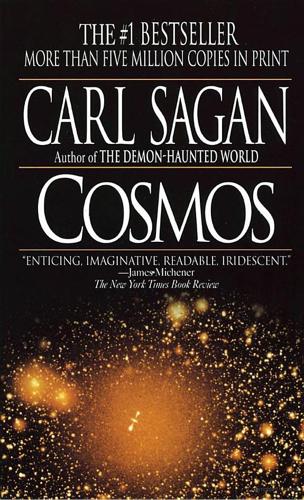
Cosmos
by
Carl Sagan
Published 1 Jan 1980
Among my candidates for the sentence that would most thoroughly astonish an astronomer of the early 1900’s is the following, from a paper by David Helfand and Knox Long in the December 6, 1979, issue of the British journal Nature: “On 5 March, 1979, an extremely intense burst of hard x-rays and gamma rays was recorded by the nine interplanetary spacecraft of the burst sensor network, and localized by time-of-flight determinations to a position coincident with the supernova remnant N49 in the Large Magellanic Cloud.” (The Large Magellanic Cloud, so-called because the first inhabitant of the Northern Hemisphere to notice it was Magellan, is a small satellite galaxy of the Milky Way, 180,000 light-years distant. There is also, as you might expect, a Small Magellanic Cloud.) However, in the same issue of Nature, E. P. Mazets and colleagues of the Ioffe Institute, Leningrad—who observed this source with the gammaray burst detector aboard the Venera 11 and 12 spacecraft on their way to land on Venus—argue that what is being seen is a flaring pulsar only a few hundred light-years away.
…
Others are bizarre beyond our most unconstrained fantasies. But we are at the very beginning of our exploration. Past voyages of discovery suggest that many of the most interesting inhabitants of the galactic continent remain as yet unknown and unanticipated. Not far outside the Galaxy there are almost certainly planets, orbiting stars in the Magellanic Clouds and in the globular clusters that surround the Milky Way. Such worlds would offer a breathtaking view of the Galaxy rising—an enormous spiral form comprising 400 billion stellar inhabitants, with collapsing gas clouds, condensing planetary systems, luminous supergiants, stable middle-aged stars, red giants, white dwarfs, planetary nebulae, novae, supernovae, neutron stars and black holes.
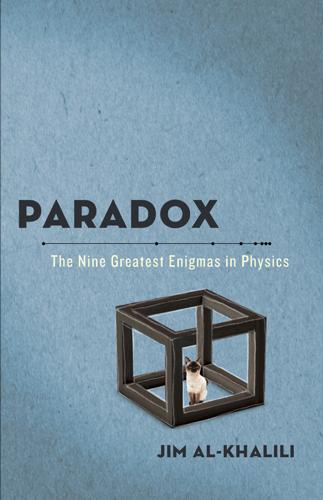
Paradox: The Nine Greatest Enigmas in Physics
by
Jim Al-Khalili
Published 22 Oct 2012
Some young stars hang together in their hundreds in loose open clumps, while larger groups, thousands strong, can be found in what are known as globular clusters. We certainly cannot distinguish individual stars in other galaxies. In fact, it is almost impossible to see other galaxies at all without the help of powerful telescopes. Even our nearest neighbor galaxies, Andromeda and the Magellanic Clouds, are barely visible to the naked eye, appearing only as diffuse patches of very faint light. The Andromeda galaxy, which is a little bigger than ours, is 2 million light-years away. If we were to shrink the Milky Way down to the size of the Earth, then Andromeda would be as far away as the Moon.
…
I felt weirdly privileged to have been there at that very moment to capture those photons of light as they made contact with my retina, triggering electrical signals that were sent to the neurons in my brain, making me conscious of what I was seeing. Physicists often tend to think in this strange way. Not only do stars form clusters within galaxies, galaxies themselves also group together in clusters. Our galaxy is one of about forty that together are known as the Local Group and also include the Large and Small Magellanic Clouds and Andromeda. Astronomical measurements have now reached such a degree of precision and sophistication, with ever-more powerful telescopes being built, allowing us to probe ever deeper into space, that we now know that galaxy clusters are themselves grouped together into what are known as superclusters.
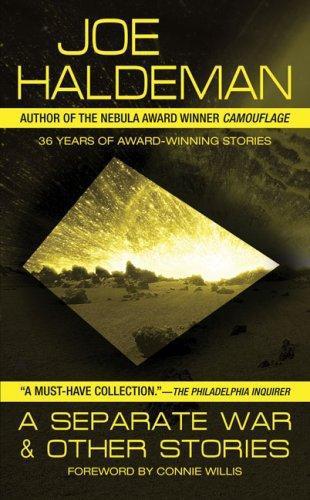
A Separate War and Other Stories
by
Joe Haldeman
Published 30 Jul 2007
We had six months of quiet communion and wild, desperate fun, and still had plenty of money left when it suddenly ended. We were having lunch in an elegant restaurant in Skye, watching the sun sparkle on the calm ocean a klick below, when a nervous private came up, saluted, and gave us our sealed orders. They were for different places. William was going to Sade-138, a collapsar out in the Greater Magellanic Cloud. I was going to Aleph-10, in the Orion group. He was a major, the Yod-4 Strike Force commander, and I was a captain, the executive officer for Aleph-10. It was unbelievable, surreal; monumentally stupid and unfair. We'd been together since Basic-five years or half a millenniumand neither of us was leadership material.
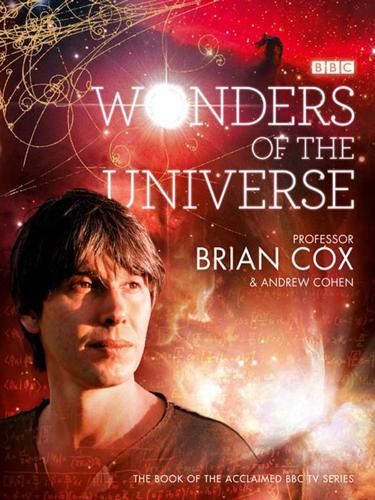
Wonders of the Universe
by
Brian Cox
and
Andrew Cohen
Published 12 Jul 2011
The glowing arc of the Milky Way Galaxy dominates the sky, a silver mist of stars so numerous, they are impossible to count. Every single point of light and every patch of magnificent mist visible to the unaided human eye have as their origin a star in our own galaxy, or the misty clouds known as the Magellanic clouds – two small dwarf galaxies in orbit around the Milky Way. All except for one… To find it, you first need to recognise the distinctive ‘W’ shape of the constellation of Cassiopeia. It sits on the opposite side of Polaris, the North Star, to the constellation Ursa Major, otherwise known as The Great Bear or The Plough.
…
32–44 Young’s double-slit experiment 34–5 Livingstone, David 56 Local Group 149 Lovell Telescope, Jodrell Bank Centre for Astrophysics 182, 183, 183 Lovell, Jim 8 Lucy (human ancestor) 47 Lüderitz, Namibia 216–19 Luna 3 162 Luna 15 96 M M33 (Triangulum galaxy) 25, 25 M51 (Whirlpool galaxy) 25, 25 M87 (Virgo A galaxy) 24, 24, 149, 149 Maffei 1 and 2 13 Magellan, Ferdinand 209 Magellanic clouds 48 magnetic fields 36–7 magnetism 36–7 see also electromagnetism Manhattan Project 115 mapping the night sky 82–3 Mars 45, 96, 153, 154, 155, 156–7 Mauna Kea, Hawaii 155 Maxwell, James Clerk 36–7, 43, 190, 215 Mayans 84 megaparsec 64, 65 Mendeleev, Dmitri 94–5, 97 Mercury 97, 175, 184, 184, 185, 190, 193 ‘The Mercury Seven’ 142 messengers 14–75 microwaves 66, 68, 69, 70–1 Michelson, Albert 120 Milky Way 12, 25, 69, 70, 148, 225, 225 Andromeda collides with 169, 170, 171 birth of stars in 29–31 death of stars in 30–1 mapping the 20, 22–3, 24–5, 26–7 name of 24 Orion Spur 28, 71 shape of 28–9 spiral arms 28 Mir space station 11 Mira (star) 84, 84, 85 Moderate Resolution Imaging Spectroradiometer (MODIS) 146 Moon: creation of 161, 161 gravitational field 159, 160–3, 161, 162, 163 looking at 44, 45 spaceflight to 8, 96–7, 96, 97, 162 Mount Everest 153, 154 Mount Wilson Observatory, Pasadena, California 60, 120 mountains, surface gravity and 154 MSO735.6+7421 (galaxy cluster) 172, 173 Musgrave, Story 53 MyCnl18 (planetary nebula) 125, 125 Mz3 (planetary nebula) 125, 125 N Namib Desert 68–9, 216–21, 236–7, 236, 237 Namibia 68–9, 68, 153, 216–21, 236–7, 239 NASA 11, 53, 84, 85, 132, 133, 142, 146, 159, 169, 176, 180, 190, 221, 231, 235, 240 Neptune 45, 97, 174 neutron 79, 106, 110, 111, 114, 115, 123, 130, 133, 181, 182, 194, 239 neutron degeneracy pressure 195 neutron stars 84, 180, 181, 182, 194 Newcomen, Sir Thomas 214, 215 Newton, Sir Isaac 32, 34, 41, 43, 56, 58, 98–9, 145, 150–1, 163, 184, 185, 190, 193 Newton’s Law of Universal Gravitation 150–1, 163, 184, 185, 186, 190, 193 newtons 154, 155 NGC 1068 (galaxy) 239, 239 NGC 281 k (new star-forming region) 67, 67 NGC1300 (galaxy) 53, 53 nubecular minor 25 nuclear fusion/fission 115–17 O OGLE2TRL9b (exoplanet) 174 Olympus Mons 153, 154, 155, 155, 156–7 Omega Nebula 84, 85, 85 origins of being 78–137 ‘atomic hypothesis’ 79 Big Bang 106–11 chemical elements and 79 cycle of life 80–1 early universe 102–17 El Tatio Geysers, Chile 104–5 elements and 94–7, 126–7 exoplanets, how to find 88–9 first stars 118–19 mapping the night sky 82–3 matter by numbers 114 meteorites and 134–5 moon rocks, study of 96 origins of life 92–3 planetary nebulae 124–5 religion and 80–1 role of stars in building blocks of our existence 90–101 simplicity of the universe 112–13 star death 122–3 stellar nurseries 84–5 Sun, Venus transits 86–7 supernova: life cycle of a star 128–37 timeline of the universe 112–13 up and down quarks 79 what are stars made of?

Collider
by
Paul Halpern
Published 3 Aug 2009
During the 1990s, the MACHO Project, an international group of astronomers based at Mt. Stromlo Observatory in Australia, catalogued thirteen to seventeen candidate microlensing events. The team discovered these characteristic brightness variations during an extensive search of the galactic halo using the Large Magellanic Cloud (a smaller neighboring galaxy) to provide the stellar background. From their data, the astronomers estimated that 20 percent of the matter in the galactic halo is due to MACHOs, ranging from 15 percent to 90 percent of the mass of the Sun. These results point to a population of lighter, dimmer stars in the Milky Way’s periphery that cannot directly be seen but only weighed.
…
Landsberg, Greg Lange, Fritz Large Electron Positron Collider (LEP) large extra dimension Large Hadron Collider (LHC) American researchers at antiprotons and black hole research and braneworld hypothesis and CERN and completion of damage from helium leak in dark energy and dark matter and decision to build description of detectors in electricity in region drained by funding of future uses of high-end physics and findings of Higgs particle research using law suits to halt operations of limitations of location of magnets in research on origins of the universe and conditions in string theory and research at tunnel design in undercurrent of fear about potentially dangerous events from operations at Large Magellanic Cloud Lattesésar law of galactic recession law of multiple proportions Lawrence, Ernest Orlando atomic process time interval measurements of cyclotron of family background of University of California, Berkeley, research of Lawrence Berkeley National Laboratory lead ions, in particle detectors Lederman, Leon Lee, Tsung Dao Leibniz, Gottfried Leigh, R.
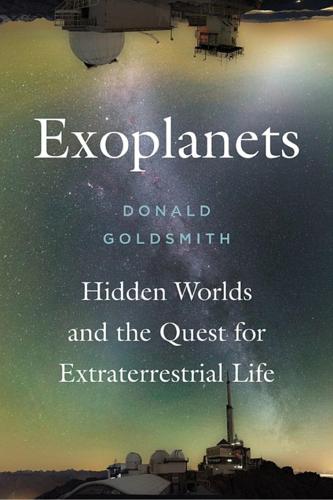
Exoplanets: Hidden Worlds and the Quest for Extraterrestrial Life
by
Donald Goldsmith
Published 9 Sep 2018
Today the site’s administration building allows astronomers and technicians to breathe more easily, not by artificially increasing the atmospheric pressure, which would require airlocks and much added expense, but by the more ingenious approach of employing special filters that enrich the fraction of oxygen in the building’s air.8 Figure 12 This nighttime view of part of the ALMA array shows the southern skies’ chief fuzzy ornaments, the two satellites of our galaxy called the Magellanic Clouds, beyond the closest dish. (Courtesy of the European Southern Observatory / C. Malin [cc BY 4.0]) ALMA’s observational triumphs include a plot of millimeter-wave emission in the object that astronomers call TW Hydrae, in which dust-rich gas surrounds a star only a few million years old. ALMA’s map of the distribution of the dust within this “protoplanetary disk” revealed notable gaps suggesting a “clearing-out” process similar to what happened—so we think—within the sun’s own protoplanetary disk.
…
See Kepler mission Kfir, Sagi, 223 KIC 8462852, 92 Kipping, David, 131 KOI-1843 b, 41 Kuiper, Gerard, 138 Kuiper belt, 138 Land, Edwin, 89 Las Campanas Observatory, 196 Lasers, 70, 208–13 La Silla Observatory, 44, 46, 58, 123 Latham, David, 52, 109–10 Le Gentil, Guillaume, 53 LHS 1140 b, 111–12 Life, extraterrestrial, 4, 6–7, 90, 98, 102, 111, 124, 156–75, 191–94, 199, 206–7, 210–13, 216–19, 222 Light year, 11–12, 68, 208, 214 Lissauer, Jack, 1, 139 Loeb, Avi, 157, 169 Lowell, Percival, 47–48 Lowell Observatory, 47–48 Lubin, Philip, 209–12 Lucretius, 5–6 Luminosity, 43–44, 82, 93, 101–13, 117–19, 152, 163, 169, 172, 185, 207 Luni-solar tides, 148–49 LUVOIR (Large UV / Optical InfraRed surveyor), 193–94 Macintosh, Bruce, 154 Magellanic Clouds, 143 Magnesium, 137, 219–20 Magnetic fields, 24–25, 150–51, 158, 168 Makemake, 138 Mars, 47, 49, 54, 98, 116, 124, 137, 140–41, 160–65, 189, 205, 212, 218, 220, 224 Mass of exoplanets, 18, 31–32, 41, 46, 51–62, 70–72, 89–94, 100, 108–12, 116, 124–34, 137–42, 145–47, 150–58, 162–65, 178, 187, 192, 200 of stars, 31–32, 79, 81 Mast, Jerry, 195 Mauna Kea Observatory, 45, 67, 72, 94, 195, 198–99, 204 Max Planck Institute for Astronomy, 108 Mayor, Michel, 32 MEarth, 46, 107, 111 Mercury, 26, 40, 52–54, 96, 113, 115, 129, 133, 145, 149, 151 Metal, 58, 88, 99, 153–54, 177, 219–20 Metallicity, 153 Meteorites, 136 Meteoroids, 124, 136, 159 Methane, 72, 106, 108, 137–38, 165, 172–73 Michelson, Albert, 204 Microlensing, 59, 78–83, 127–28, 166–67, 188 Milky Way, 6, 11–12, 16, 19, 25, 32, 45–47, 57, 62–63, 68, 76–81, 88, 118, 120, 130, 163, 184–88, 199, 208, 210 Millimeter radiation, 8, 142–44, 197 Millisecond pulsars, 26 Milner, Yuri, 212 Moon, 5, 15–16, 64, 75, 122, 128, 136–37, 148–49, 164, 176, 212, 218–21 Moons, exoplanetary, 16, 137, 140, 144, 165–66 Mount Wilson Observatory, 204 M Stars, 46, 111, 118–19, 163, 169–70, 207 Multiple planetary systems, 116, 132 Multiple star systems, 12, 68 NASA, 1, 51, 54, 61–62, 94, 105, 139, 165, 174–81, 188, 192, 203–4, 209, 212, 220 Neap tides, 149 Nelson, Jerry, 195 Neptune, 21–22, 43, 98, 101, 115, 128–33, 138, 144 Nereus, 219–20 Neutron stars, 24–26, 77 Newton, Isaac, 15, 37 Newton’s laws, 29, 38, 50 NGTS (Next Generation Transit Survey), 126 Nickel, 88, 219–20 Nitrogen, 153, 162 Nuclear fusion, 56, 67, 82–83, 99–100, 119–20, 137, 152, 218 OGLE-2011-BLG-0420Lb, 82 OGLE-2012-BLG-0026, 79 OGLE 2016-BLG-1195Lb, 80–82 Orbital brightness modulation, 85, 87, 90 Orbital resonance, 92, 127, 149 Osiris, 60, 103–7 Outer Space Treaty, 221–22 Oxygen, 137, 143, 153, 162, 172–73, 199, 219 P1257 + 12, 25–26 Palomar Observatory, 195, 204 Panspermia, 124 Paranal Observatory, 49, 73, 126, 197 Parsec, 11–12, 201 Peloton effect, 140 Perlmutter, Saul, 212 Phobetor, 26 Photons infrared, 8, 12–13, 43, 56, 64–72, 94, 104–8, 142, 172, 177–83, 198–99, 204 millimeter-wave, 8, 142–44, 197 radio, 23, 25, 27, 85–89, 94, 102, 142, 168, 202–3 synchrotron, 24–25 ultraviolet, 8, 43, 56, 110, 123–24, 169, 177–78 visible-light, 24–25, 55, 58, 76–79, 122, 182, 184, 189–90, 194, 209, 211–12, 215–16 x-ray, 8, 90, 167, 169–70 Planetesimals, 118, 139–41 Planet Nine, 21–23, 129 Planets, extrasolar.

Generation A
by
Douglas Coupland
Published 2 Jan 2009
Blueprints for a faster-than-light engine are discovered, and Queen Starsha of the planet Iscandar in the Large Magellanic Cloud sends a message saying that she has a device, the Cosmo-Cleaner D (a.k.a. Cosmo DNA), that can cleanse Earth of its radiation damage. Hang on just a bit longer . . . The inhabitants of Earth secretly convert the ruin of a WWII Japanese battleship, the Yamato, into a massive spaceship. Using Queen Starsha’s blueprints, they equip their new ship with a warp drive and a new, incredibly power ful weapon called a wave motion gun that fires from the bow. A tiny but intrepid crew of 114 leaves in the Yamato to travel to the Large Magellanic Cloud to retrieve the radiation-cleansing device.
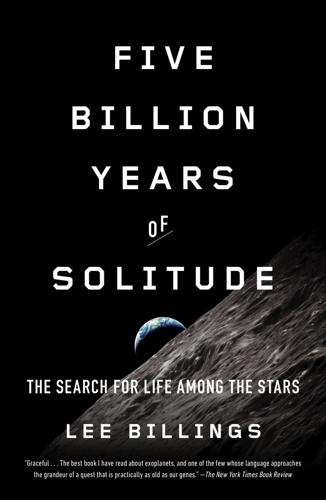
Five Billion Years of Solitude: The Search for Life Among the Stars
by
Lee Billings
Published 2 Oct 2013
Borne on photons, the echoes of primordial and Precambrian time—the formation of planets, the emergence of life on Earth, the oxygenation of our world’s atmosphere, the invasion of the land—all long ago left the Milky Way to wash over the surrounding galaxies, galactic clusters, and superclusters. An observer somewhere among the trillion stars of Andromeda, our nearest neighboring spiral, would today see the Earth of 2.5 million years ago, when the forerunners of Homo sapiens were perfecting the production of crude stone tools in sub-Saharan Africa. Seen from the Large Magellanic Cloud, a dwarf galaxy swooping near the Milky Way, our world would be locked in the glacial advance of 160,000 B.C., with our ancestors poised to migrate out of Africa as the ice sheets retreated. Within our own galaxy, the echoes are closer to home. Among the open clusters and blue hypergiant stars of the Carina Nebula, somewhere between 6,500 and 10,000 light-years away, the Earth appears as it was during the rise of agriculture and the Bronze Age civilizations of Mesopotamia, Egypt, and the Indus Valley.
…
acid runoff, 173, 175 Alienopoly, 260 Allegheny Plateau, 124–28 Allen, Paul, 12 Allen Telescope Array (ATA), 12–14, 41, 42 Alpha Centauri, 36, 52, 73, 232, 234 search for planet near, 94–98 simulations of planetary assembly in, 96, 97 American Astronomical Society, 194 Americas, 21–22 anaerobes, 129, 140, 142, 143, 169 Anaximander, 78 Anderson, Eric, 258 Andromeda Galaxy, 31, 191, 238 Anglada-Escudé, Guillem, 64–69 anthracite coal, 125, 131, 134, 136, 137, 144, 160, 184 Anthropocene era, 135–37, 145, 146 anti-gravity devices, 100 Apollo program, 1, 50, 151, 187, 202, 212, 239 Archean Eon, 139–40, 141, 169, 171, 184, 200 Arecibo Observatory, 39–42 Ares V, 203 Aristarchus, 79–81, 86 Aristotle, 78–79, 82 Arthur, Janice, 121–23 Arthur, Mike, 121–24, 127–30, 136–38 Asimov, Isaac, 152 asteroids, 3, 19, 76, 110, 140, 154, 258 Earth struck by, 30 astrobiology, 15, 153, 169, 231 astronomy, 4, 33, 48, 111, 190 Copernican Principle (principle of mediocrity) in, 83, 89, 91 golden age of, 192 modern, beginning of, 82 see also cosmology Astrophysical Journal Letters, 67 Atchley, Dana, 15 Atlantis, 185–87 ATLAST (Advanced Technology Large-Aperture Space Telescope), 198, 203, 230 atomic weapons, 23–24 atoms, 43, 79–81, 248 Automated Planet Finder (APF), 61, 70, 114 Bahcall, John, 249, 251 Bains, William, 261 Barnard’s Star, 52 Baum, Frank, 11 Beichman, Charles, 221–22 Berner, Robert, 178 Big Bang, 89–91 biosignatures, 167–72, 261–62 black holes, 88–89, 191, 206 black shales, 123–26, 135, 137–38, 141 in Marcellus formation, 126–30, 137, 138, 141, 144, 160 Bode, Johann, 109 Bode’s law, 109–10 BoingBoing.net, 74 Bonfils, Xavier, 66–69 Bradbury, Ray, 98–99 Bryson, Bill, 144 Bush, George W., 196, 198, 215, 221–23 Butler, Paul, 55, 58–70, 96, 114 Caldeira, Ken, 181 California, 105–7, 112–13 gold rush in, 105–6, 111, 112–13 Calvin, Melvin, 15, 19–20, 25 Cambrian Period, 138–39, 143–45, 182 Cameron, James, 258 Campbell, Joseph, 261 Canada, 244–48 Canadian Shield, 246 Capella, 239 carbon, 123, 131, 132, 134, 135, 140, 141, 175, 179, 182 carbonate-silicate cycle, 175–81, 184 carbon cycle, organic, 175 carbon dioxide (CO2), 124, 132, 134–37, 140, 141, 157, 159–62, 168, 170, 172, 173, 175–82, 184 Carboniferous Period, 131, 132 Carina Nebula, 238 Carnegie Institution, 251 Carpenter, Scott, 100 Carter, Jimmy, 240 Cash, Webster, 219–20 Cerro Tololo Inter-American Observatory, 96 Challenger, 3, 188–89 Chandra X-Ray Observatory, 192, 209 Chaotian Eon, 139 Charbonneau, David, 228–30, 232 charged-coupled devices (CCDs), 51–53 China, 21–22 chlorofluorocarbons, 134, 142 chlorophyll, 141, 143 Christmas Tree Cluster, 238 Clinton, Bill, 196, 215 clouds, 161–62, 164, 206 coal, 125, 131, 134, 136, 137, 144, 160, 184 Columbia, 189, 196 comets, 2, 3, 19, 76–77, 140 Halley’s, 3 Compton Gamma Ray Observatory, 192, 209 computers, 43–44 Constellation program, 196, 198, 203, 204, 215, 221, 223 convergent evolution, 21 Cook, James, 85–86 Copernican Principle (principle of mediocrity), 83, 89, 91 Copernicus, Nicolaus, 81–83, 86, 87, 89, 91, 200 Cornell University, 39, 42 coronagraphic TPF, 217–22, 224, 231, 249 coronagraphs, 217 cosmology, 77–82 Copernican Principle (principle of mediocrity) in, 83, 89, 91 inflationary theory in, 89–92 modern, 86–87, 91 see also astronomy Cosmos, 240 Costanza, Robert, 74–75 Crab Nebula, 30 Crabtree, William, 84 Crutzen, Paul, 134–35 Cuban missile crisis, 23–24 cyanobacteria, 140–44, 175, 183 Daily Mail, 74 dark energy, 88, 90 dark matter, 206 Darwin, Charles, 200 Davidson, George, 113 deep time, 145–46 Democritus, 79, 80, 92, 238 Demory, Brice, 259 De Rerum Natura (On the Nature of Things) (Lucretius), 80–81 De Revolutionibus Orbium Coelestium (On the Revolutions of Heavenly Orbs) (Copernicus), 82 Devonian Period, 128, 130–32 Diamandis, Peter, 258 dinosaurs, 30, 136, 144 Discovery, 189 DNA, 40, 141, 143, 170 dolphins, 16, 20–21 Drake, Frank, 9–17, 27–45, 101, 167–68, 240 Arecibo transmission of, 39–41 orchids of, 37–38 Drake equation, 16–25, 28–29, 38–39, 41, 42, 183 longevity of technological civilizations (L term) in, 22–25, 38–39, 41, 42 Draper Laboratory, 256 Dyson, Freeman, 104 Dyson spheres, 104, 105 Earth, 109 asteroid strike on, 30 atmosphere of, 3, 132, 134–35, 139, 140, 144, 157–60, 168–69, 174–77, 206, 238 “Blue Marble” images of, 212, 239–41 carbonate-silicate cycle on, 175–81, 184 climate of, 123–24, 128, 132–37, 142, 144, 156–57, 160–62, 173–75, 184 in early cosmology, 77–82 energy consumption on, 103–4 extinctions on, 43, 135, 184 faint young Sun problem and, 173–75 formation of, 2, 7, 20, 139, 173 geologic time periods of, 128–45 glaciation on, 132–34, 142, 174, 176, 178, 179, 183 human population of, 43, 100, 134, 136 ice caps of, 128, 132–33, 135, 136, 184 Laughlin’s idea for moving orbit of, 76–77 Laughlin’s valuation of, 73–76 oxygen on, 139–44, 159, 171, 180–82, 200, 238 Snowball Earth events, 142, 174, 179 Sun’s distance from, 83, 86 tectonic plates of, 30, 105, 111, 128, 140, 144, 176, 229 union of organisms with geophysical systems on (Gaia hypothesis), 175, 176, 178, 183 water on, 3, 30, 158–61, 174, 177–80, 182 Earth, life on, 31, 154 diversification and explosion of, 138–39, 143, 144, 182 emergence of, 4, 7, 19–20, 238 end of, 7–8, 31–32, 75–77, 159, 180–83 essential facts of, 29–30 humanity’s ascent, 144–46 intelligent, 20–21, 182–83 jump from single-celled to multicellular, 28 redox reactions and, 168 Earth-like planets, 29, 32–34, 71–72, 99, 227–28 Earth-size or Earth-mass planets, 6, 53–54, 56, 200, 227, 251 ecology and economics, 74 economic growth, 102, 103 Eddington, Arthur, 35 Edison, Thomas, 106 Einstein, Albert, 35, 87 Elachi, Charles, 211–12, 214, 221 electricity, 103, 136 Emerson, Ralph Waldo, 254 Endeavour, 190 endosymbiosis, 143 energy, 103–4, 136–38 from fossil fuels, 103, 124–27, 137, 154, 160, 184 Engelder, Terry, 126 Epicurus, 80 Epsilon Eridani, 10–11 Eshleman, Von, 35 ethanol, 137 eukaryotes, 143, 144 European Southern Observatory (ESO), 60, 64, 66 European Space Agency, 222 evolution, 183 convergent, 21 of universe, 88–89 exoplanetology, 13, 14, 34, 51, 193 exoplanets, 5, 27–28, 87, 222–23, 263 51 Pegasi b, 50, 53, 54, 58–59 Alpha Centauri Bb, 98–99 biosignatures and, 167–72, 261–62 Blue Marble images of, 212–15 distinguishing between various compositions of, 251 Earth-like, 29, 32–34, 71–72, 99, 227–28 Earth-size or Earth-mass, 6, 53–54, 56, 200, 227, 251 formation of, 109 GJ 667Cc, 65–69, 72 Gliese 581c, 163 Gliese 581d, 163 Gliese 581g (Zarmina’s World), 63–64, 68, 69, 72, 163 Gliese 876b, 60 habitability of, 154–83 HD 85512b, 163–64 Jupiter-like, 13, 28, 50, 56, 59, 60, 108, 109, 226, 228, 248–49 Laughlin’s valuation of, 71–77 migration theory and, 108 Neptune-like, 56, 108–9, 251 “Next 40 Years” conference on, 225–35, 263 observation of stars of, 33 snow line idea and, 110 super-Earths, 228–29, 251, 262 transits of, 53 TrES-4, 228 exoplanet searches, 5–7, 13–14, 32–33, 69–70 and false-alarm discoveries, 52–53 press releases on progress in, 163–65 SETI and, see SETI spectroscopy in, see spectroscopy, spectrometers see also telescopes Ferguson, Chris, 185–86 financial markets, 111–12 Fischer, Debra, 59, 61, 62, 69, 96 Ford, Eric, 249–50 Ford, Henry, 125 fossil fuels, 103, 124–27, 137, 154, 160, 184 fracking (hydraulic fracturing), 126–27 Gaia hypothesis, 175, 176, 178, 183 galactic planetary census, 54 galaxies, 87, 88, 99, 238 Andromeda, 31, 191, 238 Hubble Telescope and, 191 Local Group of, 88 Milky Way, see Milky Way Galileo, 241–42 Galileo Galilei, 81–83, 210 Galliher, Scot, 257 Garrels, Robert, 178 gas, natural, 125–27, 137, 184 Gemini telescopes, 199–200, 203 General Dynamics Astronautics time capsule, 100–103 geologic time periods, 128–45 geology, 110–11, 123 glaciers, 132–34, 142, 174, 176, 178, 179, 183 Glenn, John, 100 Goldin, Dan, 194, 211, 215, 242 governments, Urey on, 102 gravitational lenses, 35–37 Great Observatories, 192, 197, 209 Greece, ancient, 77, 92, 238 Green Bank conference, 15–25, 27–28, 101, 167–68, 240 greenhouse gases, 124, 134, 137, 157, 160, 174, 175 carbon dioxide, see carbon dioxide methane, 140, 142, 168–71, 174, 200 Grunsfeld, John, 197–99, 225–26, 235 Guedes, Javiera, 96 Gund Institute for Ecological Economics, 74–75 “Habitable Zones around Main Sequence Stars” (Kasting), 155–56, 159 Hadean Eon, 139–40, 156 Halley, Edmond, 84 Halley’s comet, 3 Hart, Michael, 174, 178 Hays, Paul, 176–79 heliocentrism, 79–82 Hiroshima, 23 Holmes, Dyer Brainerd, 100–101 Holocene Epoch, 133–35, 145 Horrocks, Jeremiah, 84 Howard, Andrew, 62 How to Find a Habitable Planet (Kasting), 167 Hu, Renyu, 259 Huang, Su-Shu, 15, 19 Hubble, Edwin, 86–87 Hubble Space Telescope, 189–93, 195, 197–99, 205–7, 209, 218–19, 226 human genome project, 234 hydraulic fracturing (fracking), 126–27 hydrogen, 159, 170–72 Icarus, 155 ice ages, 132, 133, 142–43 Industrial Revolution, 22, 134 inflationary theory, 89–92 Ingersoll, Andrew, 159 intelligence, 20–21, 23, 32, 182–83 interferometry, 213–14, 216, 231 International Space Station (ISS), 187, 189, 197, 202, 207–8, 210 interstellar travel, 44–45, 100–101 iron, 141 James Webb Space Telescope (JWST), 193–99, 202–4, 209, 215, 216, 218, 220, 225, 262 Jensen-Clem, Becky, 259 Jet Propulsion Laboratory (JPL), 211–12, 216, 219, 221–25, 231 Johnson, Lyndon B., 101 Journal of Geophysical Research, 178 Jupiter, 76, 109, 191, 239 Galileo’s study of, 81 Kepler’s laws and, 83 moons of, 28, 110 Jupiter-like planets, 13, 28, 50, 56, 59, 60, 108, 109, 226, 228, 248–49 Kasdin, Jeremy, 219–20 Kasting, Jerry, 150–52 Kasting, Jim, 150–67, 169–84 children of, 153 Kasting, Sandy, 150 Kasting, Sharon, 153 Keck Observatory, 59, 60, 62, 66, 118 Kennedy, John F., 224 Kennedy Space Center, 185 Kepler, Johannes, 82, 83 planetary motion laws of, 82–84 Kepler field stars, 41 Kepler Space Telescope, 13–14, 53–54, 56, 62, 71–73, 98, 108–9, 166, 201, 225, 229–30, 263 Kirschvink, Joseph, 142 Knapp, Mary, 259 Korolev, Sergei, 186 Kuchner, Marc, 217–18 Kuiper Belt, 76 Large Magellanic Cloud, 238 Lasaga, Antonio, 178 Late Heavy Bombardment, 3, 140 Laughlin, Greg, 5–6, 48–50, 53–57, 69–70, 93–100, 107–12, 114–15, 117–20 Alpha Centauri planet search and, 94–98 idea to move Earth, 76–77 magnetic toy of, 93–94 SETI as viewed by, 99 valuation equation of, 71–77 laws of nature, 155–56 Lederberg, Joshua, 15, 16, 167–68 Le Gentil, Guillaume, 85, 117 Leinbach, Mike, 185–86 Lick, James, 112–14 Lick Observatory, 58, 61, 62, 70, 113–19 life, 32 on Earth, see Earth, life on intelligent, 23, 32 single-celled, 20 technological, see technological civilizations light: photons of, 72, 89, 115–16, 156, 191, 193–94, 201, 202, 213, 216, 237–38 polarization of, 115–16 waves of, 213–14, 216 Lilly, John, 15–16, 20–21 Local Group, 88 Lovelock, James, 168, 170, 174–76, 178, 181–83 Lucretius, 80–81 Lyot, Bernard, 217 Madwoman of Chaillot, The, 36 Manhattan Project, 23 Marcellus Center for Outreach and Research, 127, 149 Marcellus formation, 126–30, 137, 138, 141, 144, 160 Marconi, Guglielmo, 48 Marconi Conference Center, 48–50, 53–57 Marcy, Geoff, 57–63, 69, 70, 114, 194, 230–32, 235 Margulis, Lynn, 175 Mars, 19, 50, 87, 100, 107, 109, 155, 167, 179, 191, 192, 239 Kepler’s study of, 82, 83 missions to, 187, 188, 196, 207, 221 water on, 28, 179 Marshall, James, 105–6, 112 Martian Chronicles, The (Bradbury), 98–99 Massachusetts Institute of Technology (MIT), 251–52, 259 ExoplanetSat project, 256–57 “Next 40 Years of Exoplanets” conference at, 225–35, 263 Mayor, Michel, 58 McPhee, John, 145 mEarth Project, 228–29 mediocrity, principle of (Copernican Principle), 83, 89, 91 Mercury, 82, 109, 239 meteorites, 20 methane, 140, 142, 168–71, 174, 200 methanogens, 140, 142, 169 microbes, 28 Miletus, 77 Milky Way, 16–17, 25, 31, 39, 41, 79, 86–87, 191, 237, 238 Sun’s orbit in, 95 Miller, George P., 101 Miller, Stanley, 19 Miller Institute for Basic Research in Science, 48, 74 mitochondria, 143 Moon, 3, 76, 100, 229, 242 in early cosmology, 78, 83 formation of, 30, 139 Moon, missions to, 188, 196, 221, 224 Apollo, 1, 50, 151, 187, 202, 212, 239 Morrison, Philip, 15, 18–19, 21, 23–24 Mosely, T.
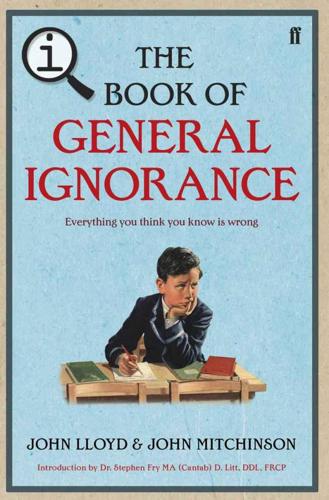
QI: The Book of General Ignorance - The Noticeably Stouter Edition
by
Lloyd, John
and
Mitchinson, John
Published 7 Oct 2010
Given that there are estimated to be more than 100 billion galaxies in the universe, each containing between 10 and 100 billion stars, it’s a bit disappointing. In total, only four galaxies are visible from Earth with the naked eye, only half of which can be seen at once (two from each hemisphere). In the Northern Hemisphere, you can see the Milky Way and Andromeda (M31), while in the Southern Hemisphere you can see the Large and Small Magellanic Clouds. Some people with exceptional eyesight claim to be able to see three more: M33 in Triangulum, M81 in Ursa Major and M83 in Hydra, but it’s very hard to prove. The number of stars supposedly visible to the naked eye varies wildly, but everyone agrees that the total is substantially less than 10,000.
…
W. von 1 goldcrests 1, 2 goldfish, memory of 1 Gomeran Whistle 1, 2 Goodyear, Charles 1 gorillas and the appendix 1 beds of 1 Gorringe 1, 2 Gorringes, distinguished 1 Gould, Stephen Jay 1 Grant, Alexander 1 graphite, in pencils 1 Great Britain 1, 2, 3, 4, 5, 6 accidents in 1 baseball invented in 1 cannibalism in 1 cave paintings in 1 celluloid first manufactured in 1 Celts in 1, 2 champagne invented in 1 chicken eaten in 1 dental hygiene in 1 depression in 1 earthquakes in 1 first modern Olympics held in 1 first Prime Minister 1 guillotine invented in 1 hokey-cokey, as dance 1 hottest chili from 1 invention of concentration camp by 1, 2 lightning in 1, 2 love of Marmite 1 most deadly war for 1 nettle eating in 1 obesity in 1 Panama hats in 1 Penny Post 1 popularity of CTM in 1 royal telemessages 1 rugby invented in 1 sleep clinics in 1 smallest bird from 1, 2, 3 smallest dog from 1, 2 turkeys in 1 VAT on chocolate biscuits 1 witches in 1 Great Fire of London 1 Great Pyramid 1 Great St Bernard Pass 1 Great Wall of China 1, Greater Rheas 1 Greece, ancient and modern carrots as aphrodisiacs 1 Haggis in 1 log cabins in 1 meaning of panthera 1 modern Olympics 1 naked wrestling 1 as our necessary precondition 1 perception of colours in 1 Periander’s Diolkos 1 Pheidippides’ run 1 protective effigies in 1 running-with-a-ball game 1 sound of dogs in 1 virgin-birth myths 1 Greenland 1, 2 Greenwood, John 1 grey matter 1 grey wolves 1 Grimm, Brothers 1 Guanches people 1 guano, as commodity 1 Guess, Nathaniel 1 Guillotin, Joseph Ignace 1 guillotine 1, 2 guinea pigs, uses for 1 Gutenberg, Beno 1 Guthrum 1 gypsum, uses for 1 Haakon VII, King of Norway 1 haggis, origins of 1 Hagiwara, Makato 1 hailstorms 1 hair, post-mortem growth of 1 and ruefulness 1 Haiti 1, 2, 3, 4 Hamilton, Emma 1, 2 Hancock, John 1 Hancock, Thomas 1 Hancock, Tony 1 hands (human) engineering of 1 fingers, and muscles 1 Hanks, Tom (seismologist) 1 Hardmuth, Josef 1 Hardy, Thomas (naval officer) 1 hares 1 Harington, John 1 Harris, Joel Chandler 1 Harteswood, Richard 1 Haselbacher, René 1 hashish 1 Hassan-i Sabbah 1 Hawaii 1, 2, 3 Hawker Hurricane 1 hawthorn, associations of 1 heliocentric orbit of earth, first claim of 1 helium 1 ‘hello’ as expression of surprise 1 first use of, on delegates’ badges 1 first written use of 1 Hendrix, Jimi 1 Henry II, King 1 Henry IV, King 1 Henry V, King 1 Henry VII, King 1 Henry VIII, King 1, 2 commitment problems 1 number of wives of 1 Henry the Black 1 Henry of Trastamara 1 Herero people 1 Herodotus 1, 2, 3, 4, 5 Heron (Hero) 1, 2 Heywood, John 1 Hibbler, Winston 1 Hicks, Charles 1 Hill, Rowland 1, 2 Himalaya 1, 2 hippopotamuses 1 colour-blindness of 1 Washington’s false teeth 1, 2, 3 Hitler, Adolf, vegetarianism of 1 Hobson, Mary 1 hokey-cokey, origin of 1 Homer 1 Horsefield’s tortoise 1 horses 1, 2, 3, 4, 5, 6, 7, 8, 9, 10 Horseshoe Bend, Battle of 1 Horus, virgin birth of 1 Houghton, Joel 1 Howard, Catherine 1 Howard, Luke 1 Hubble Space Telescope 1 Hubert, Robert 1 Hulagu Khan 1 human beings appendix, evolution of 1 bonding process in 1 brain colour of 1 constipation 1 dissection of 1 dolphins as smarter than 1 evolved from 1 hands, engineering of 1 lacking baculi 1 longevity in 1, 2 muscles of 1, 2 number of nostrils of 1 penisrelationship 1 percentage of brain used by 1 post-mortem hair growth 1 resembling running ostriches 1 senses of 1 see also diseases; man-made objects Hungary 1, 2 Hurricane Katrina 1 Huxley, Aldous 1 Ice Age, most recent 1, 2 ice cream, inventor of 1 Iceland 1, 2, 3, 4 igloos 1 iguanas 1 Immaculate Conception 1 India 1, 2, 3, 4, 5, 6, 7, 8 bubonic plague in 1 concentration of tigers in 1 lucky numbers in 1 sound of frogs in 1 suicide rate in 1 Indonesia 1 infrared vision 1 Innocent III, Pope 1 insects ants 1 bees 1 bugs 1 centipede’s legs 1 cockcroaches 1 fruit flies 1 and Giant Sequoia bark 1 navigation of 1 in space 1 total number of 1 Inuit 1 Ionian Sea 1 Iranaeus of Lyon, Saint 1 Iraq 1, 2, 3 Ireland caid 1 Celts in 1, 2 Cromwell’s expedition to 1 goose eating 1 kilts invented in 1 Marco O’Polo from 1 saints from 1, 2 troops at Culloden 1 Wellington’s origins 1 whisky distilled in 1 iridium 1, 2 Irving, Washington 1 Isle of Man, curry in 1 Israel 1 Italy 1, 2, 3, 4, 5, 6, 7, 8, 9 Izumi, Shigechiyo 1 Jackson, Andrew 1 Jaffa Cakes 1 jaguars 1 James I, King 1, 2 James II, King 1 Japan 1, 2, 3, 4, 5, 6, 7, 8, 9 invention of rickshaw 1 sound of frogs in 1 Java, tigers in 1 Jayden, as popular name 1 Jesus Christ 1, 2, 3 jobs, most dangerous 1 Johnson, Charles K. 1 Johnson, Samuel 1, 2 Jordemaine, Margery 1 Joyce, James 1 Judaism 1, 2, 3, 4, 5 Jupiter 1, 2 Kagan, Lord 1 Kanamori, Hiroo 1 kangaroo, Aboriginal meaning of 1 Keller, Helen 1 Kennedy, Jimmy 1 Kenya 1 Western Highlands of 1 William Wallace from 1 Ketterle, Wolfgang 1 Kevin, Saint 1 Khan, Arif 1 killer, biggest 1 kilts, origins of 1 kings of England 1 Kirchoff, Gustav 1, 2 kiwi (bird) 1 Knight-Bruce, Rory 1 knighting, practice of 1 Knox (anatomist) 1 Koch, Robert 1 Korea 1 Korean War 1 Kouros, Yannis 1 krill 1 Kripke, Daniel 1 Krung Thep 1 Kuwait 1 Kyeser, Konrad 1 Laika (dog) 1 lakes, largest in Canada 1 Landseer, Edwin 1 Landy, John 1 Lapland 1, 2, 3 Laprise, Larry 1 Large and Small Magellanic Clouds 1 lateral line 1, 2 Lawrence, D. H. 1, 2 Le Carré, John 1 Leasor, James 1 Leeuwenhoek, Antonie van 1 lemmings, death of 1 Lennie, Peter 1 Lennon, John 1 Lennon, Julian 1 Leonardo da Vinci 1 leopards 1 Lesotho 1 Lesser Rheas 1 ‘let them eat cake’, said by 1 Lichfield, Lord 1 light, speed of 1 lightning and Giant Sequoias 1 vs asteroid, most likely to be killed by 1 lily of the valley 1 Lincoln, Abraham 1 Lind, James 1 Lindon, Richard 1 Linnaeus, Carl 1, 2 lion’s mane jellyfish 1 lions 1, 2, 3 Lisle, Claude Rouget de 1 Lithuania, suicide rate in 1, 2 Little Ice Age 1 Live Oak 1 Lloyd George, David 1 Lluyd, Edward 1 Locusta 1 log cabin, invention of 1 loofahs, origins of 1 Lorenz, Conrad 1 Loud, John J. 1 Louis, Antoine 1 Louis XIII, King of France 1 Louis XIV, King of France 1, 2 Louis XVI, King of France 1, 2 Lowell, Paul 1 Luckner, Count Nikolaus Graf von 1 lumberjacks 1 Lutyens, Mary 1 Lyly, John 1 McCarty, Catherine 1 Macintosh, Charles 1 Mackay, Charles 1 McVitie’s 1 Madagascar 1 Magellan, Ferdinand 1, 2 magnetoception 1 Malachy, Saint 1 malaria 1, 2, 3 Malaya 1 Malaysia 1 Malheur National Forest 1 Mandeville, Sir John 1 Manhattan Project 1 man-made objects largest 1 visibility from the moon of 1 Manson, Patrick 1 Maori 1, 2 marathons, reason for length of 1 Marie Antoinette, Queen of France 1, 2, 3, 4 Marie-Thérèse, Queen of France 1 Mark II computer 1 Markham, Gervase 1 Marmite 1 Marmontel, Jean François 1 marmots as killers 1 Vancouver Island 1 Mars 1, 2, 3, 4, 5, 6 colour of 1 Marseillaise, La 1 Marshall, Barry 1 Martens, Conrad 1 Marx, Karl 1 Mary I, Queen 1 Mary, Virgin 1 Mason, Francis K. 1 materials, most common 1 mathematics equals sign 1 and neck ties 1 matter, states of 1 Maughan, Ron 1 Mauna Kea 1 Mauritius 1 May, gathering nuts in 1 May, Robert 1 Mayan civilization 1 Mee, Arthur 1 Mediterranean spur-thighed tortoise 1 Melville, Herman 1 Mendeleev, Dmitri 1, 2 Menzies, Gavin 1 Mercator, Gerard 1 mercury 1 Mesopotamia 1 metals best conductor 1 Bunsen’s isolation of 1 detectors 1 liquid state of 1 Methuselah 1, 2 Meucci, Antonio 1 Mexico 1, 2, 3, 4, 5 Michaud, Joy and Michael 1 Midgely, Thomas 1, 2 Milky Way 1, 2, 3 Millais, John Everett 1 Miranda, Carmen 1 Mitchell, Francis 1 Mithra, virgin birth of 1 Moment Magnitude Scale (MMS) 1 Mongolia 1 Mongols 1 Mons Olympus (Mars) 1 Montalembert, Count de 1 Moon artefacts visible from 1 cheese and 1 orbit of 1 size of 1 smell of 1 Moore, Clement Clarke 1 Morgan, T.

The Cancer Chronicles: Unlocking Medicine's Deepest Mystery
by
George Johnson
Published 26 Aug 2013
Nancy looked so thin and frail to me, but she made it to the very end of every hike. One evening after dinner we walked out of the lodge and the stars were more brilliant than we had ever seen. Brilliant and strange. The constellations were unfamiliar, and a pair of dwarf galaxies stared down at us like two big eyes. It took a minute to realize that they were the Magellanic Clouds. Magellan had used them to navigate in the Southern Hemisphere, where the North Star is not visible. And it was within these starry nebulae that Leavitt discovered the Cepheids. Had she lived in this century, the statisticians tell us, her odds of getting stomach cancer would have been much lower.
…
Love Canal low-fat diet, dubious benefits of lumps, discovery of, 2.1 lung cancer, 2.1, 2.2, 2.3, 3.1, 5.1, 5.2, 7.1, 7.2, 7.3, 7.4, 7.5, 8.1, 10.1, 10.2, 10.3, 11.1 incidence of, 7.1, 11.1 radiation and, 11.1, 11.2 lungs, metastasis to, 1.1, 3.1, 3.2, 4.1, 4.2, epl.1 lymphangiogenesis, 4.1, 5.1 lymphatic system, 2.1, 2.2, 3.1, 4.1, 8.1, 11.1, epl.1 as metastatic pathway, 4.1, 5.1, 6.1 lymphedema, 11.1, 11.2 lymphocytes lymphomas, 1.1, 9.1 Lyndon B. Johnson Space Center macrophages, 9.1, 10.1 Madame Curie (movie) Magellanic Clouds mammograms screening debate over March of Dimes Maret, Nancy (author’s wife), 4.1, 4.2, 11.1 in aftermath of cancer, 13.1, epl.1 childlessness of healthy lifestyle of, 2.1, 2.2, 2.3, 4.1, 8.1 marriage ended by Maret, Nancy (author’s wife), cancer of diagnosis of, 1.1, 2.1, 3.1, 8.1, 9.1, 10.1, 12.1, epl.1 follow-ups to metastatic route of, 2.1, 3.1, 4.1, 6.1 treatment strategy for, 4.1, 6.1, 8.1, 11.1, 13.1 Massachusetts General Hospital, 12.1, 12.2 mass spectrometry mastectomies, 2.1, 12.1 Maxwell’s demons, epl.1, epl.2 Mayo Clinic McLaughlin, Thomas MD Anderson Cancer Center, 1.1, 2.1, 9.1, 11.1, 12.1 Nancy’s trip to, 8.1, 9.1 mean, median vs.

The Day the World Stops Shopping
by
J. B. MacKinnon
Published 14 May 2021
We all know the moon, of course, and the stars—though most of us see a sky robbed of many of them by light pollution. But Hough reminded his audience of others: the northern and southern auroras; zodiacal light, which is a hazy, glowing pyramid on the horizon caused by sunlight reflecting off cosmic dust; the Magellanic Clouds, a pair of galaxies visible as smudges of light in the Southern Hemisphere; electrically charged luminescent clouds; phosphorescent plants, fungi, minerals, waters and “gaseous emanations”; fireflies on land, and in the sea, the 150 species then known to produce their own illumination. “Under the clear night sky of the Arizona deserts the atmosphere seems charged with star mist; eminences miles away may be outlined, the dial of a watch may be read, and a trail followed with little difficulty,” Hough said.
…
See also Sado “levelling mechanism,” 219–20 Levi Strauss & Co., 17, 137, 293 Levy, Sidney J., 111–12 Lewis, Logan, 201 light bombs, 74 light pollution, 70, 72–75, 77 lightbulbs, 145, 148, 163. See also LEDs Livermore, California, 143, 145 loneliness, epidemic of, 50, 284 Loos, Adolf, 152 Louis Vuitton, 102, 229, 260, 269 low-tech living, 179 Low-Tech Magazine, 177 Luhrs, Janet, 237, 240–41, 245 Lyon, France, 178 “mad rush,” 52 Magellanic Clouds, 74 “makerspace,” 189 Malagasy rainbow frog, 228 Malthus, Thomas, 219 Man the Hunter (Lee), 277 Managing without Growth (Victor), 90 manumea, 231–32 “marginal propensity to consume,” 87 Marina (case study), 133–34 Marken Lichtenbelt, Wouter van, 204–8 “market hunters,” 233 Marx, Karl, 165 Maslow, Abraham, 245 Mass Observation, 46–50, 52, 54 Matanle, Peter, 268 materialism, 39, 103, 119, 212, 218, 238, 244, 247, 260, 265, 283, 286–87 consumer culture, psychological foundation of, 19 green materialism, 122 paradox of, 121 pursuing, 123–24 rejecting, 127 utilitarian attitude of, 120 vice of, 10 well-being, influence on, 125 Matrix, The (film), 153 Matsumoto, Shigeru, 214 McDonald’s, 23, 43 McKibben, Bill, 173 McKinsey & Company, 28, 156 media architecture, 76, 268 men, and economic crash, 133 “metronome behaviour,” 287 micromaxis, 40 Mighty Lights, 76 Millennials, 106, 131, 160, 287 Miller, Daniel, 22–23 Miller, Geoffrey, 287 Ministry of Internal Affairs, 133 Modern Family, 28 Møller, Lise, 174, 177, Molokini, 228–29, 234 mom-and-pop shops, 44, 135, 172 money, 209, 211–13, 219–20 accursed share,” 219 “backfire,” 216 frugals, 218 and environmental impact, 215–16, 218 rebound effects,” 215–17 respending, 215 and savers, 216 tightwads, 218 voluntary simplifiers, 218 “money-motive,” 122 “moral licensing,” 217 Msuya, Joyce, 8 Nahid, Fakir Kamruzzaman, 159 Nakano, Yoshihiro, 270 Narayanganj, 157, 159 NASA, 58, 70 nature, reconnecting with, 126 “near-perfect lives,” 282.

Wireless
by
Charles Stross
Published 7 Jul 2009
Sagan smiles in a vaguely disconnected way. “We’re nowhere near our original galactic neighborhood and whoever moved us here, they didn’t bend the laws of physics far enough to violate the speed limit. It takes light about 160,000 years to cross the distance between where we used to live, and our new stellar neighborhood, the Lesser Magellanic Cloud. Which we have fixed, incidentally, by measuring the distance to known Cepheid variables, once we were able to take into account the measurable blue shift of infalling light and the fact that some of them were changing frequency slowly and seem to have changed rather a lot. Our best estimate is eight hundred thousand years, plus or minus two hundred thousand.
…
What everyone knows is that between zero three fifteen and twelve seconds and thirteen seconds Zulu time, on October second, ’sixty-two, all the clocks stopped, the satellites went away, the star map changed, nineteen airliners and forty-six ships in transit ended up in terminal trouble, and they found themselves transferred from a globe in the Milky Way galaxy to a disk which we figure is somewhere in the Lesser Magellanic Cloud. Meanwhile the Milky Way galaxy—we assume that’s what it is—has changed visibly. Lots of metal-depleted stars, signs of macroscopic cosmic engineering, that sort of thing. The public explanation is that the visitors froze time, skinned the Earth, and plated it over the disk. Luckily they’re still bickering over whether the explanation is Minsky’s copying, uh, hypothesis, or that guy Moravec with his digital-simulation theory.”

What We Cannot Know: Explorations at the Edge of Knowledge
by
Marcus Du Sautoy
Published 18 May 2016
She was employed at the time not as an astronomer but as a ‘computer’ at the Harvard College Observatory, extracting data from the photographic plates for 30 cents an hour. Women weren’t allowed to operate the telescopes. She’d been assigned the task of analysing stars that grew brighter and dimmer over a period of time. Curious to know if there was any pattern to the pulse of these stars, Leavitt focussed on a batch of stars that were located in the Small Magellanic Cloud and were therefore believed to be at similar distances from the Earth. When she plotted luminosity against the period of pulsation, she discovered a very clear pattern. The time it takes a Cepheid star to pulsate is directly correlated with its luminosity: the longer the period of pulsation, the brighter the star is shining.
…
415–18; certainty and 364–6; consciousness and see consciousness; conjectures as lifeblood of 420; cracking of great unsolved problems 375–8; dice and see dice; God and see God; infinity and see infinity; limit of senses and 417–18; mathematical universe hypothesis (MUH) 297–8; proof and 6, 366–73, 377–8, 401, 405–6, 417; proves that certain things are beyond knowledge 369–73, 401, 405–6, 417; quantum physics and see quantum physics; science vs. 364–6; theorems see under individual theorem name; timeless nature of 297–8; unknowns in see under individual area of mathematics; ‘unreasonable effectiveness of mathematics’ 298 see also individual area of mathematics Maxwell, James Clerk 34, 136, 142, 143, 419; Matter and Motion 47 May, Robert M. 51–3, 72; chaos theory and 48–54, 55, 56, 57, 72; ‘Simple Mathematical Models with Very Complicated Dynamics’ 48–51, 56 McCabe, Herbert 15, 181 McGurk effect 328 Mendeleev, Dmitri 89–90, 91, 106, 108, 116 Mercury 63–4, 190, 194 Méré, Chevalier de 24–5, 26 Mermin, David 154, 155 Messiaen, Olivier 305 MET office 46–7, 61–2 Michell, John 275 Michelson, Albert Abraham 10–11, 253, 254, 255, 275 microscopes 78–9, 88, 93, 126, 305, 307, 416 Milky Way 203, 204, 227 Millikan, Robert Andrews 142–3 mind-body problem 330–2 Minkowski, Hermann 261–2, 270 Mittag-Leffler, Gösta 39–41, 204, 399 Moon 20, 34, 37, 38, 189, 190, 198, 206, 250, 251, 267 Moore’s law 8, 281 Mora, Patricia 280 Morley, Edward 253, 254, 255, 275 Mount Wilson, California 105–6, 204 multiverse 227–35, 238, 242, 298, 382, 404–5 muon 104, 105, 106, 258–9 Museum of the History of Science 188 music 77, 78, 79, 80–1, 82, 85, 88, 89, 90, 101, 121, 122, 126, 127, 137, 138, 139, 140, 177, 191, 195, 308, 314, 369, 419 mysterianism 349–50, 351 National Physical Laboratory, London 252, 254 Nature 8, 48, 53 Navier–Stokes equations 34 Ne’eman, Yuval 115 Necker cube 321, 323, 328 Neddermeyer, Seth 104 negative curvature 210 negative numbers 371–2 Neptune 197, 227 neurons: ageing and 258, 259; C. elegans worm complete neuronal network published 4, 345, 349; consciousness and 5, 309, 311–14, 323–9, 340, 341, 342, 343–6, 347, 348, 349, 350, 351, 353, 359, 376–7; Jennifer Aniston neuron 4, 324–7, 347, 359; Ramón y Cajal discoveries 311–13, 348 neutrinos 105, 221, 407 neutron 79, 90, 95, 100–1, 103, 105, 106, 107, 110, 116, 119, 125, 126, 165, 166 New Scientist 2, 4 Newlands, John 90 Newton, Sir Isaac 5, 6, 28–9, 53, 86, 131, 141, 156, 168, 176, 179, 262, 272; calculus and 30–2, 87; dice and 35–6, 154; God and 71; gravity and 29, 30, 32, 33–4, 37, 38, 72, 88, 196, 278–9; laws of motion and 29, 32–7, 38, 67, 72, 78, 87–8, 97, 133, 143, 153, 154, 159, 278–9, 280; life of 29–30; Opticks 88, 134; Philosophiae Naturalis Principia Mathematica 29, 32–5, 88, 252, 257; planetary motion and 33–41, 72, 280; relativity and 257; space and time, view of absolute nature of 252, 253, 262; Theory of Everything and 35; theory of light 88, 134, 135, 141 Nishijima, Kazuhiko 109–10 Nobel Prize 5, 106, 143, 204, 236, 321 non-commutativity 164 novae 204 nuclear fusion 274 nucleons 107–8 number theory 378, 384–8, 401–2, 403, 404 observation, quantum physics and 148–58, 168–70, 173, 178 Occam’s razor 233 Old Babylonian Period 83 omega particle 115–16 ontology 70, 170, 177, 178, 179, 418 Oppenheimer, Robert 117 Oresme, Nicolas 190–1, 218, 235, 391–2, 393, 394 Oscar II of Norway and Sweden, King 37–8, 62 out-of-body experiences 328–30 Owen, Adrian 333–4 Pais, Abraham 109 Papplewick Pumping Station 137–8, 139 paradox of unknowability 413–14 parallax 200–1, 202 parallel postulate 378–80, 401 Paris, Jeff 388 Parkinson’s UK Brain Bank 307–8, 313–14 Pascal, Blaise 24–5, 26–8, 36; Pascal’s wager 26–8, 241, 242; Pensées 389 Penrose, Roger 277–8, 290, 291–6, 387 pentaquark 120, 124 Pepys, Samuel 35–6 perceptronium 356 Perelman, Grigori 375–6 periodic paths 38–9 periodic table 86–7, 89–92, 95, 97, 101, 103, 106, 116, 125, 274 Perrin, Jean Baptiste: Les Atomes 94 photoelectric effect 140–3, 147 photons 10, 108, 141, 147, 148, 149, 150, 155, 156, 163, 168–9, 207, 208, 220–1, 227–8, 284, 287, 291, 292 physics: limits of discoveries 10–11, 12, 20, 123, 405, 418; many worlds’ interpretation of 155–6; no mechanism to explain 230; tension between mathematics and 404–5; unification of general relativity and quantum physics 7, 168, 219, 220 see also under individual area of physics pions 106, 107, 108, 109, 110–11, 115, 118 Planck, Max: Planck constant 138–9, 141, 163, 407; Planck length 167–8, 407 Planck spacecraft 226 planets: detecting new 195–8, 200–1, 227; distances between 193–5; measuring time and 251, 259, 267, 269, 278–9, 280; modelling of future trajectories 63–4, 72; motion of 29, 33–41, 62–4, 72, 88, 193, 279, 280; multiverse and 231; music of the spheres and 81; new habitable 3; singularities and 280 Plato 81–2, 113, 188, 208–9, 304, 368, 373, 409–10, 412 Pleiades 20, 250 Plough or Big Dipper 190, 191, 213 Podolsky, Boris 172 Poincaré, Henri 4, 36–41, 42, 44, 62, 64, 375 Poisson, Siméon-Denis 34 Polaris star 188 Polkinghorne, John 69–70, 174–9, 240, 355 Popper, Karl 233, 239, 415 population dynamics 1–2, 48–51, 56, 62, 65, 176, 280–1 PORC conjecture 376–7, 388, 420 Preskill, John 289–90 prime numbers 8, 157, 404, 415 probability 21–2, 23–8, 35, 37, 60, 92, 94, 146–8, 153, 154, 155, 157, 158, 159, 162, 178, 308, 349, 403, 405, 408 proof: birth of idea 366–9; by contradiction 83–4, 243; certain knowledge and mistakes in mathematical 39–41, 377, 383–8, 402–3, 412–16; chance to establish more permanent state of knowledge and 6, 366–7; false 412–13 proprioception 416–17 proton 79, 90, 95, 98–9, 100, 101, 103, 105, 106, 107, 108, 109, 110, 116, 117, 119–20, 123, 125, 126, 166 Proxima Centauri 188, 201, 202 punctuated equilibria 61 Pythagoras 80, 81, 82, 83, 84, 89, 117, 127, 206, 243, 255, 256, 262, 324, 325, 326, 359, 363, 370, 374 qualia 325, 350, 357 quantum physics 11, 12, 28, 69, 70, 104, 126, 127, 131, 132, 133, 143–58, 159–83, 219, 220, 228–9, 231, 241, 274, 284, 288, 289, 297, 338, 354, 355, 402, 407, 408–9; black holes and 274, 284, 288, 289, 355; chaos theory and see chaos theory; Copenhagen interpretation of 178; counterintuitive nature of 132, 159, 164, 284; density of electron and 126; double-slit light experiment 134–6, 143, 144–7, 148, 149, 150, 151, 152–3, 154, 157, 161–2, 163, 165, 166, 169, 170, 171, 173; electromagnetism, attempt to unify with 104; general relativity, unifying with theory of 7, 168, 219, 220; inflation and 229; language and 408–9; observation and 148–58, 168–70, 173, 178; particle nature of light and 88, 134–49; quantum entanglement 172; quantum fluctuations 182, 183, 228–9, 231, 288; quantum gravity 7, 168, 183; quantum microscopes 79; quantum tunnelling 165–6; quantum Zeno effect 150–1; radioactive uranium emission of radiation and 131–3, 143–4, 150, 151, 158, 159, 160, 166–7, 171–2, 173–4, 176, 177, 178, 179, 180, 183; repeating an experiment in 408; reversible laws of 284–5, 355; trusting the maths of 165; uncertainty principle and 133, 159–60, 162–3, 164, 165, 166–7, 168–70, 180, 181–3, 243, 266, 274–5, 288, 290; wave function 5, 146–9, 153–8, 165, 169, 173, 177, 178–9, 402 quark 3, 79, 116–21, 122, 123, 124, 125, 126, 127, 175, 187, 298, 335, 407 quidditism 298 Rabi, Isidor 105 radioactivity 98–9, 107, 131, 132–3, 171, 173 Ramón y Cajal, Santiago 311–13, 348 randomness 70, 131, 133, 143–4, 153, 154–5, 171–2, 174, 230, 338 redshift 214–16, 220, 222, 224 Rees, Martin 418 Reiss, Diana 318 relativity, theories of 5, 6, 7–8, 12, 72, 105, 115, 141, 143, 168, 219, 220, 248, 252, 253–72, 273, 275, 277, 278, 281, 282, 285, 288, 291, 293, 296, 299, 359 religion 13–15, 68–71, 174–8, 179, 181, 235–40, 320, 348–9, 355, 393, 399, 401–2, 410, 411 see also God rhetoric, art of 368, 369 Riemann, Bernhard 261–2, 376, 377, 388, 402, 404, 413, 420 Robertson, Howard 163 Robinson, Julia 401 Rømer, Ole 199 Rosen, Nathan 172 Rosetta Stone 113 Rovelli, Carlo 300 Royal Academy of Sciences, Paris 199 Royal Institution Christmas Lectures 2–3 Royal Observatory 197 Royal Society 90, 326–7 Royal Swedish Academy of Science 39 Rufus of Ephesus 306 Rumsfeld, Donald 11 Rushdie, Salman: Midnight’s Children 247, 264 Russell, Bertrand 380–1, 412 Rutherford, Ernest 98, 99, 100, 119, 120 Saint Augustine 22, 296; City of God 391; Confessions 249 Sartre, Jean-Paul 337 Saturn 63, 64, 190, 196 Schopenhauer, Arthur 77, 78 Schrödinger, Erwin 5, 131, 132, 146, 154, 177 Schumacher, Heinrich Christian 392 science/scientific discovery: constantly evolving nature of 364–6; dominance of 1–2; exponential growth in 3–4, 8–9; laws of nature, search for ultimate 9; mathematics vs. 364–6; only appears to describe reality 418; questions that can never be resolved 9–13, 295, 347, 349–50, 353, 355–60, 405–6, 407–20; success rate of and production of true knowledge 416 Scientific American 2 Searle, John 338–9 self-recognition test, animals and 317–19 sense of self 317, 319–20, 331, 342, 343 senses: limit of 416–18; out-of-body experiences and 328–30, 416 Serber, Robert 117, 119 S4 (group of symmetries) 112 Shakespeare, William 219, 399 Shapely, Harlow 204 Shull, Clifford 165 Sigma baryons 107, 108, 109, 110, 115, 119 singularity 8–9, 219, 220, 238, 248, 278–82, 283, 284, 289, 290, 293, 294 61 Cygni 201, 202 sleep, consciousness and 315–16, 339–41, 342, 343, 344, 346 Small Magellanic Cloud 203 Socrates 412 space-time: black holes and 276–8, 283, 284, 285; God and 296–8; origin of concept 262–4; shape of 264–72, 275–8, 283; singularities and 283, 284, 293 special relativity, theory of 105, 141, 143, 248, 252, 253–64, 275, 296, 359 Sphinx observatory, Switzerland 213–14, 223 square number 392, 394 ‘squaring the circle’ 373–4 Stanford University 229, 401; Stanford Linear Accelerator Center 119 stars: Andromeda nebula 203, 204; Big Bang and 220; black holes and 274–7, 284; chemical composition of 10; collapse of 222, 275, 276, 277; Comte predicts we will never know constituents of 10, 202, 243, 347, 409; creation of a 274; curved space-time and 271–2; death of 222; expanding universe and 214–18, 220, 222–3, 224, 227; fusion of atoms in 274; general theory of relativity and 271, 272; luminous matter and 238; measuring distance/brightness of 202–5, 214–16; paper star globe 187–8, 190, 195, 200, 201, 225, 227, 244; red giant 63; redshift and 214–16, 220, 222, 224; shape of universe and 187–8, 208–9; size of universe/infinity and 187–8, 190–2, 202–7; speed of light and 253; stellar parallax 200–1, 202; supernova and 222; white dwarf 274–5 see also under individual star and constellation name stellar parallax 200–1, 202 Stoppard, Tom: Arcadia 19, 53 strange quark 117, 118, 119, 120, 121 strangeness 108, 109–11, 115–16 string theory 127, 168, 234 strong nuclear force 107, 108, 109–10 Strzalko, Jaroslaw 67 SU(3) (symmetrical object) 5, 111–12, 113, 114, 115, 116–17, 120, 125 SU(6) (symmetrical object) 121 Sun 188, 189, 190, 193, 196, 199–200, 201, 203, 275; black holes and 276, 277; as centre of universe 193, 227, 413; Cepheid stars and 203, 204; chemical composition of 10; creation of 274; curved space-time and 271; distance of Earth from 193–5, 201, 206; entropy and 287; gravity and creation of 274; mass of 34, 275; measuring time and 251, 253, 271; pattern of movement 20, 188, 227, 251, 253, 271; planets orbit of 176, 193–6, 227; red giant, evolution into 63; size of 189; speed of light and 198, 199–200, 201, 253; time measurement and 251, 253, 271; trigonometry and 189, 201 supernova 222, 275 symmetry 103, 110, 111–17, 120, 121, 125, 269–72, 273, 327, 342, 344, 374, 376 synesthesia 325–6 Taleb, Nassim: The Black Swan 12 Tartaglia, Niccolò Fontana 25 technology: brain studies and 306, 314, 329–30, 336; singularity 281; rate of change/growth in 8, 281 Tegmark, Max 297–8 telescope: Andromeda and 204; discovery of new planets and 3, 195–8; invention of 189, 190, 192, 193–5, 200, 296, 305, 416; measuring distance of planets and 193–5; name 193; neural 305, 314–16, 323; paper 322–3, 325–6, 328; speed of light and 198–9, 200; stellar parallax and 201; trigonometry as 189–90 telomeres 5 Templeton Foundation 236, 237 Templeton, Sir John/Templeton prize 235–6, 237 Thales of Miletus 366–7 ‘The Great Debate’, Smithsonian Museum of Natural History, 1920 203–4 theory of abduction 233 Theory of Everything 9, 34–5 thermal time hypothesis 300 thermodynamics, second law of 285–6, 287, 290, 293 Thomson, J.
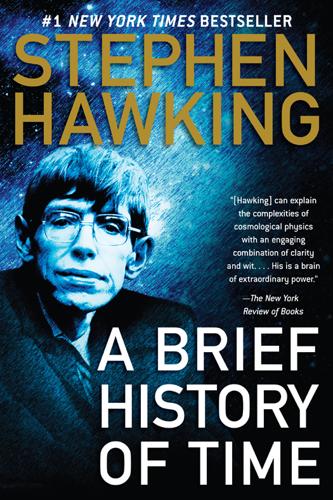
A Brief History of Time
by
Stephen Hawking
Published 16 Aug 2011
FIGURE 6.2 The brighter of the two stars near the center of the photograph is Cygnus X-l, which is thought to consist of a black hole and a normal star, orbiting around each other. We also now have evidence for several other black holes in systems like Cygnus X-l in our galaxy and in two neighboring galaxies called the Magellanic Clouds. The number of black holes, however, is almost certainly very much higher; in the long history of the universe, many stars must have burned all their nuclear fuel and have had to collapse. The number of black holes may well be greater even than the number of visible stars, which totals about a hundred thousand million in our galaxy alone.
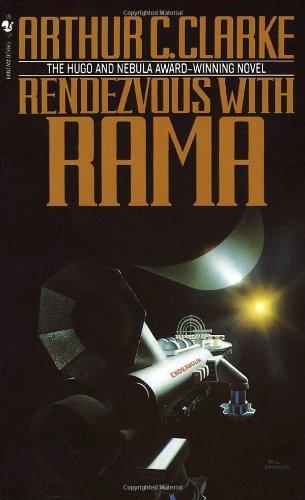
Rendezvous With Rama
by
Arthur C. Clarke
Published 27 Jun 1973
In less than two hours, its direction of motion had swung through more than ninety degrees, and it had given a final, almost contemptuous proof of its total lack of interest in all the worlds whose peace of mind it had so rudely disturbed. It was dropping out of the Ecliptic, down into the southern sky, far below the plane in which all the planets move. Though that, surely, could not be its ultimate goal, it was aimed squarely at the Greater Magellanic Cloud, and the lonely gulfs beyond the Milky Way. CHAPTER FORTY-SIX - Interlude 'Come in,' said Commander Norton absentmindedly at the quiet knock on his door. 'Some news for you, Bill. I wanted to give it first, before the crew gets into the act. And anyway, it's my department.’ Norton still seemed far away.

AIQ: How People and Machines Are Smarter Together
by
Nick Polson
and
James Scott
Published 14 May 2018
This particular star completes a cycle from bright to dim to bright again every 5.4 days. Leavitt discovered that a pulsating star’s period was related to its brightness: brighter pulsating stars oscillate more slowly than dim ones, in a mathematically predictable way. By 1912, Leavitt had zeroed in on a group of 25 pulsating stars in the Small Magellanic Cloud.* Because these stars were all part of the same cluster, Leavitt felt safe in assuming that they were all about the same distance from Earth. Therefore, if a star seemed brighter, it actually was brighter at the source. For each star, she tabulated two data points. First, there was its period of pulsation, or how long the star took to complete one full cycle from bright to dim to bright again.
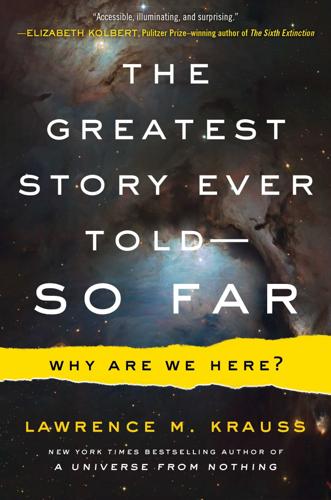
The Greatest Story Ever Told--So Far
by
Lawrence M. Krauss
Published 21 Mar 2017
On February 23, 1987, however, another event occurred that demonstrates a maxim I have found is almost universal: every time we open a new window on the universe, we are surprised. On that day a group of astronomers observed, in photographic plates obtained during the night, the closest exploding star (a supernova) seen in almost four hundred years. The star, about 160,000 light-years away, was in the Large Magellanic Cloud—a small satellite galaxy of the Milky Way observable in the southern hemisphere. If our ideas about exploding stars are correct, most of the energy released should be in the form of neutrinos, despite that the visible light released is so great that supernovas are the brightest cosmic fireworks in the sky when they explode (at a rate of about one explosion per hundred years per galaxy).
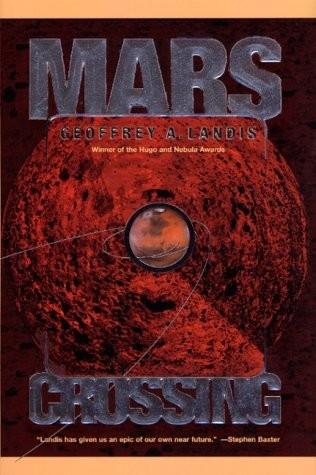
Mars Crossing
by
Geoffrey A. Landis
Published 15 Jan 2000
She waited until he was leaving a class, and then walked up behind him. "One time," she said, "you took me up the mountain to see the stars. The sky over the school, it was very dark. You pointed out to me the glowing clouds, like a distant fire in the sky, and told me that it was a baby galaxy, the Magellanic Clouds, and it was so far away that we were seeing it as it had been thousands of years ago, and that if every star there had burned out, we would not know for a thousand years. Do you remember?" João did not turn around. "Yes," he said. "I remember." I thought you were going to kiss me, she thought.

The Last Stargazers: The Enduring Story of Astronomy's Vanishing Explorers
by
Emily Levesque
Published 3 Aug 2020
Oscar, after over four straight hours of guiding that evening, finally let the astronomers take over so he could take a brief break around 2:00 a.m. He headed downstairs from the control room and prepared some coffee, and while it brewed, he stepped outside to admire the sky. When he looked up, he noticed that something was slightly different. Overhead was the Large Magellanic Cloud, nicknamed the LMC, a small satellite galaxy of our Milky Way about 163,000 light-years away. At that distance, the miasma of individual stars in the galaxy melts into a sort of bright fog rather than a visible collection of stars, giving it its apt name. A practiced eye can spot a few familiar features—knots of newborn stars, bright stellar clusters, or patches of light-blocking interstellar dust—but even for most astronomers, the LMC is a lovely feature of the southern sky rather than something they can map from memory.
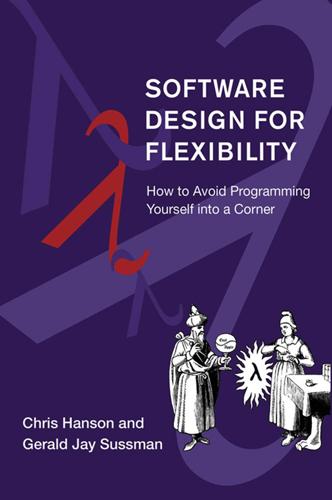
Software Design for Flexibility
by
Chris Hanson
and
Gerald Sussman
Published 17 Feb 2021
Popek; Report on the programming language Euclid, Technical report, Computer Systems Research Group, University of Toronto, 1981. [81]Peter Landin; “A correspondence between Algol 60 and Church's lambda notation: Part I,” Communications of the ACM, 8(2) (1965): 89–101. [82]Henrietta S. Leavitt; “1777 variables in the Magellanic Clouds,” in Annals of Harvard College Observatory, 60 (1908): 87–108. [83]Floor Van Leeuwen; “Validation of the new Hipparcos reduction,” in Astronomy & Astrophysics, 474(2) (2007): 653–664. [84]Karl Lieberherr; Informationsverdichtung von Modellen in der Aus-sagenlogik und das P=NP Problem, ETH Dissertation, 1977
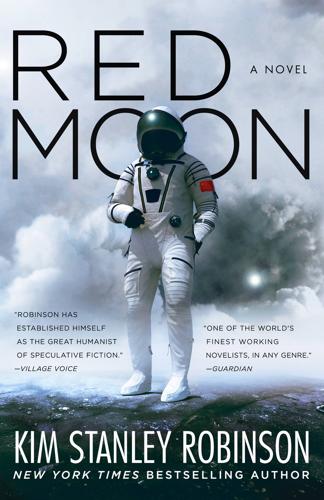
Red Moon
by
Kim Stanley Robinson
Published 22 Oct 2018
He said enthusiastic things about the view in as genuine a tone as he could muster, and almost met their curious gazes. Crater sublime; starscape amazing. Fred had never visited Earth’s southern hemisphere, and now he nodded politely as his hosts pointed out the Southern Cross overhead, and a blob with a texture like the Milky Way’s, which they said was a Magellanic Cloud. A couple of points of light moving through the stars were apparently satellites in lunar polar orbits. A larger satellite, like a little oblong moon, brilliant on its sunward side and a velvet gray on its dark side, was an asteroid, his hosts told him, brought into lunar orbit for its carbonaceous chondrite.
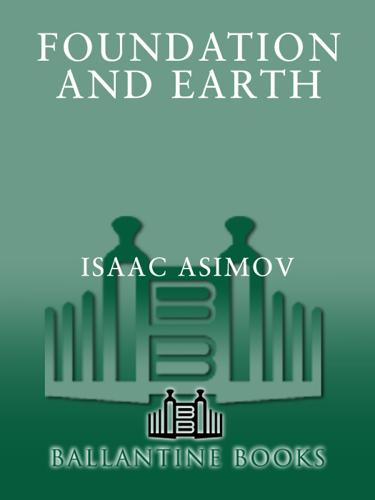
Foundation and Earth
by
Isaac Asimov
Published 28 Dec 2010
Yet we speak so much and so often of the Galaxy that it is all but impossible for us to see that this is not enough. The Galaxy is not the Universe. There are other galaxies.” Pelorat and Bliss stirred uneasily. Daneel listened with benign gravity, his hand slowly stroking Fallom’s hair. Trevize said, “Listen to me again. Just outside the Galaxy are the Magellanic Clouds, where no human ship has ever penetrated. Beyond that are other small galaxies, and not very far away is the giant Andromeda Galaxy, larger than our own. Beyond that are galaxies by the billions. “Our own Galaxy has developed only one species of an intelligence great enough to develop a technological society, but what do we know of the other galaxies?
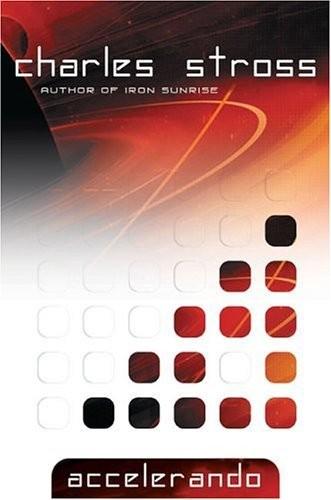
Accelerando
by
Stross, Charles
Published 22 Jan 2005
By the time it does, it will have as much brainpower as you'd get if you placed a planet with a population of six billion future-shocked primates in orbit around every star in the Milky Way galaxy. But right now, it's still stupid, having converted barely a percentage point of the mass of the solar system – it's a mere Magellanic Cloud civilization, infantile and unsubtle and still perilously close to its carbon-chemistry roots. It's hard for tapeworms living in warm intestinal mulch to wrap their thousand-neuron brains around whatever it is that the vastly more complex entities who host them are discussing, but one thing's sure – the owners have a lot of things going on, not all of them under conscious control.
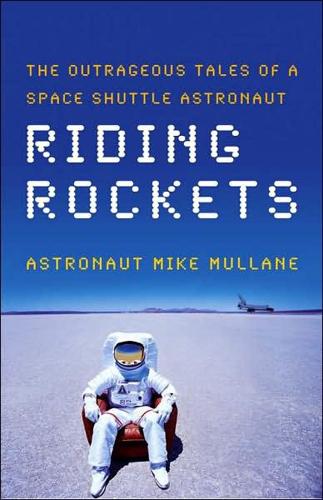
Riding Rockets: The Outrageous Tales of a Space Shuttle Astronaut
by
Mike Mullane
Published 24 Jan 2006
The view of the Earth’s horizon immediately eradicated any sense of the fall. The ocean underAtlantis was now the Pacific. The sun dropped and its terminator light painted a scattering of cumulus clouds in coral pink. In the darkness that followed I looked spaceward to the unfamiliar stars of the southern hemisphere. The Magellanic Clouds were visible as hazy smudges. A quarter moon rose. Seen through the thick part of the atmosphere, the orb was severely distorted, appearing boomerang in shape, an effect of the light-bending qualities of the air. The crescent tips were squeezed inward and the greater surface bulged outward. Only after rising above the atmosphere did the crescent appear normal.
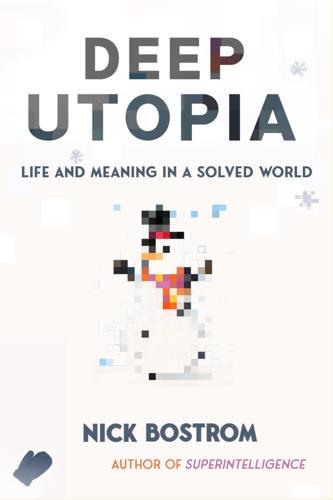
Deep Utopia: Life and Meaning in a Solved World
by
Nick Bostrom
Published 26 Mar 2024
So if we wanted to be significantly unique within the intergalactic conclave— within the entire lineage of terrestrial descent—we may thus find this desire harder to satisfy subsequent to such astronomical population growth. Of course, if we care only about being unique within the clique of the hundred or so people that we interact with on a regular basis, and we don’t mind having some doppelgangers doing their own very similar things out there somewhere in the Magellanic Clouds, then the size of the world population, or even the size of the human diaspora, is not directly relevant. Still, an increased population would constrain the kinds of parochial uniqueness to which we could plausibly aspire. Note that a population boom is not a necessary consequence of technological maturity and cosmic expansion, even if we postulate that the additional resources would all be used for the implementation of sentient beings.

Heaven's Command (Pax Britannica)
by
Jan Morris
Published 22 Dec 2010
In the daytime the sky was often banked tremendously with white rolling clouds, and the light was so clear that miles away across the plain one could see the distant slow movements of tribespeople with their cattle. At night the sky was tremendous with unfamiliar constellations, and smudged with the mysterious Magellanic Clouds, and through the silence crickets chafed and night-birds abruptly whooped. It was a place for simple romanticism, schoolboy thoughts of fate and infinity, glorious impulses and heady self-delusions. The commander of the force was not a soldier at all, but a well-known colonial physician, Dr Leander Starr Jameson.
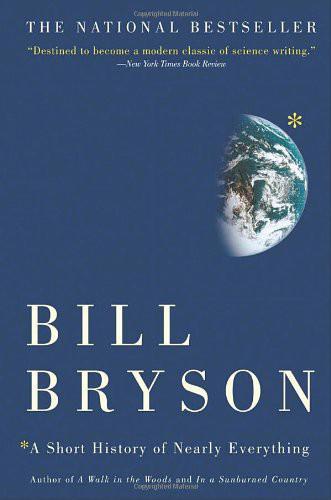
A Short History of Nearly Everything
by
Bill Bryson
Published 5 May 2003
Only half a dozen times in recorded history have supernovae been close enough to be visible to the naked eye. One was a blast in 1054 that created the Crab Nebula. Another, in 1604, made a star bright enough to be seen during the day for over three weeks. The most recent was in 1987, when a supernova flared in a zone of the cosmos known as the Large Magellanic Cloud, but that was only barely visible and only in the southern hemisphere—and it was a comfortably safe 169,000 light-years away. Supernovae are significant to us in one other decidedly central way. Without them we wouldn't be here. You will recall the cosmological conundrum with which we ended the first chapter—that the Big Bang created lots of light gases but no heavy elements.

Across Realtime
by
Vernor Vinge
Published 1 Jan 1986
Expression drained from her face, and she seemed almost as cold as in their first meetings. "Intelligent life is a rare development. "I spent nine thousand years on this, spread across fifty million years of realtime. I averaged less than a twentieth light speed. But that was fast enough. I had time to visit the Large Magellanic Cloud and the Fornax System, besides our own galaxy. I had time to stop at tens of thousands of places, at astrophysical freaks and normal stars. I saw some strange things, mostly near deep gravity wells. Maybe it was engineering, but I couldn't prove it, even to myself. "I found that most slow-spinning stars have planets.
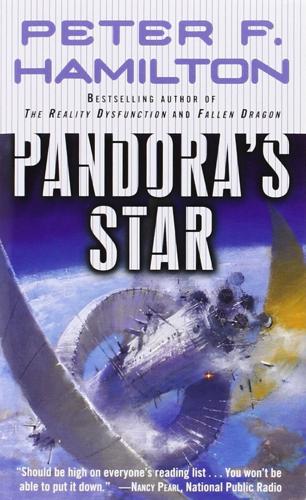
Pandora's Star
by
Peter F. Hamilton
Published 2 Mar 2004
“That’s one hell of a side effect.” “You have to take the alien viewpoint. They triggered the flare to communicate across the entire galaxy. Whatever machine manipulated the star into flaring then went on to modify the emission into a coherent radio signal powerful enough to be detected as far away as the Magellanic Clouds. We humans certainly picked it up easily enough, you barely needed a dish when the signal reached Damaran, let alone the SETI scanners they were using back then.” “But nobody knows what they were saying,” Wilson observed. “We’ve had a hundred and eighty years to decode the signal, and I’m not aware of any breakthrough yet.

The Rough Guide to New Zealand: Travel Guide eBook
by
Rough Guides
Published 1 Jan 2024
Tours usually go ahead even if it’s cloudy; you will only qualify for a refund if your tour is cancelled due to wind or rain. Observatory Night Tour (daily after nightfall, approx 8pm in winter, 10pm in summer; 2hr). Easily the most popular tour, you’ll get to look through the largest telescopes available (up to 61cm) at whatever’s up: the Southern Cross, the Large Magellanic Cloud, nebulae, and perhaps the glorious Jewel Box. The team will show you how to get the best star photos, and if the night is cloudy you’ll delve into the life of an astronomer and the work being done by the universities of Canterbury and Nagoya. Twilight Tour (daily at dusk, summer only; 2hr).